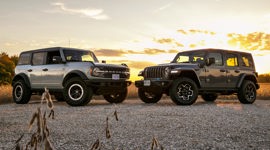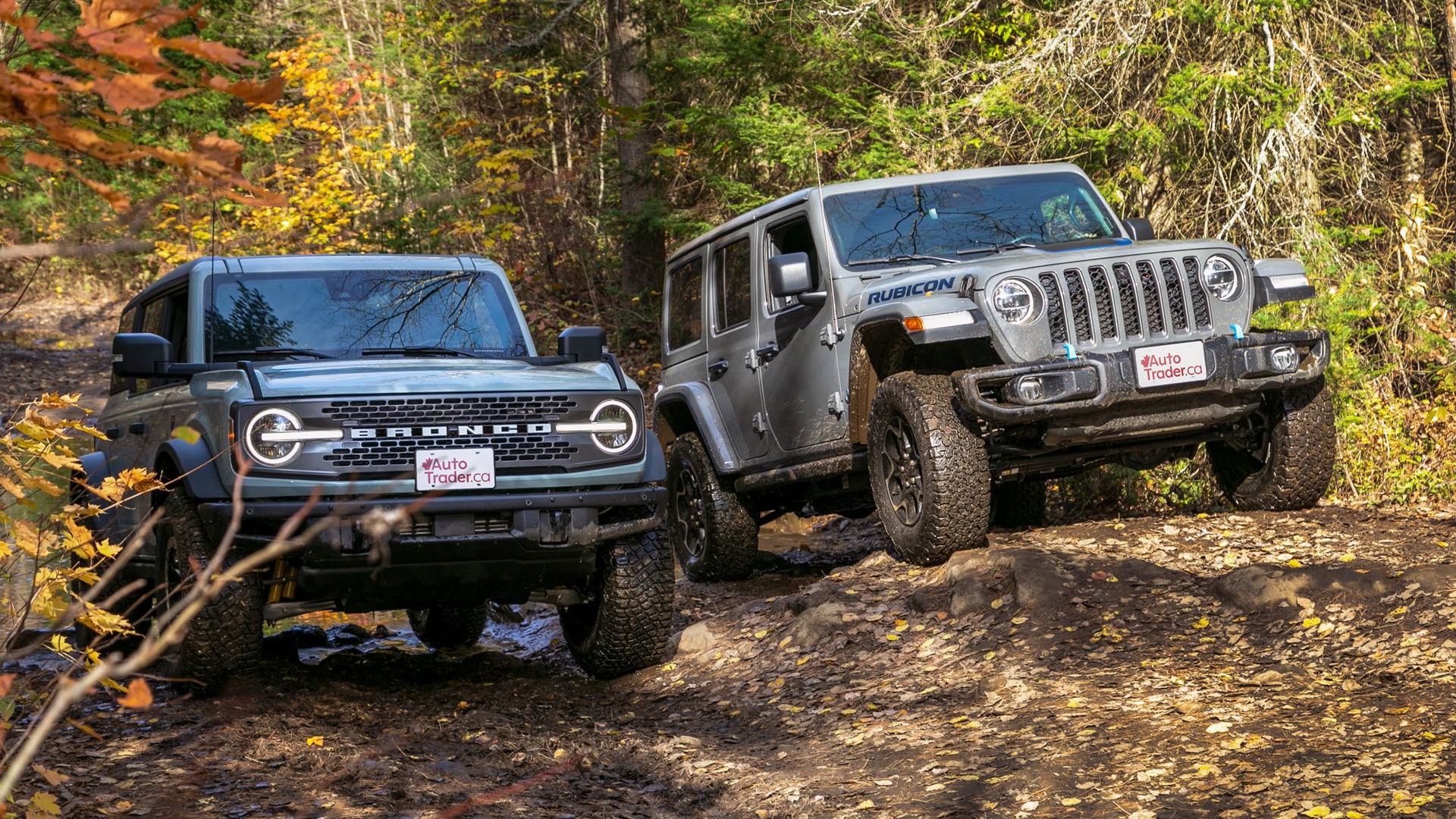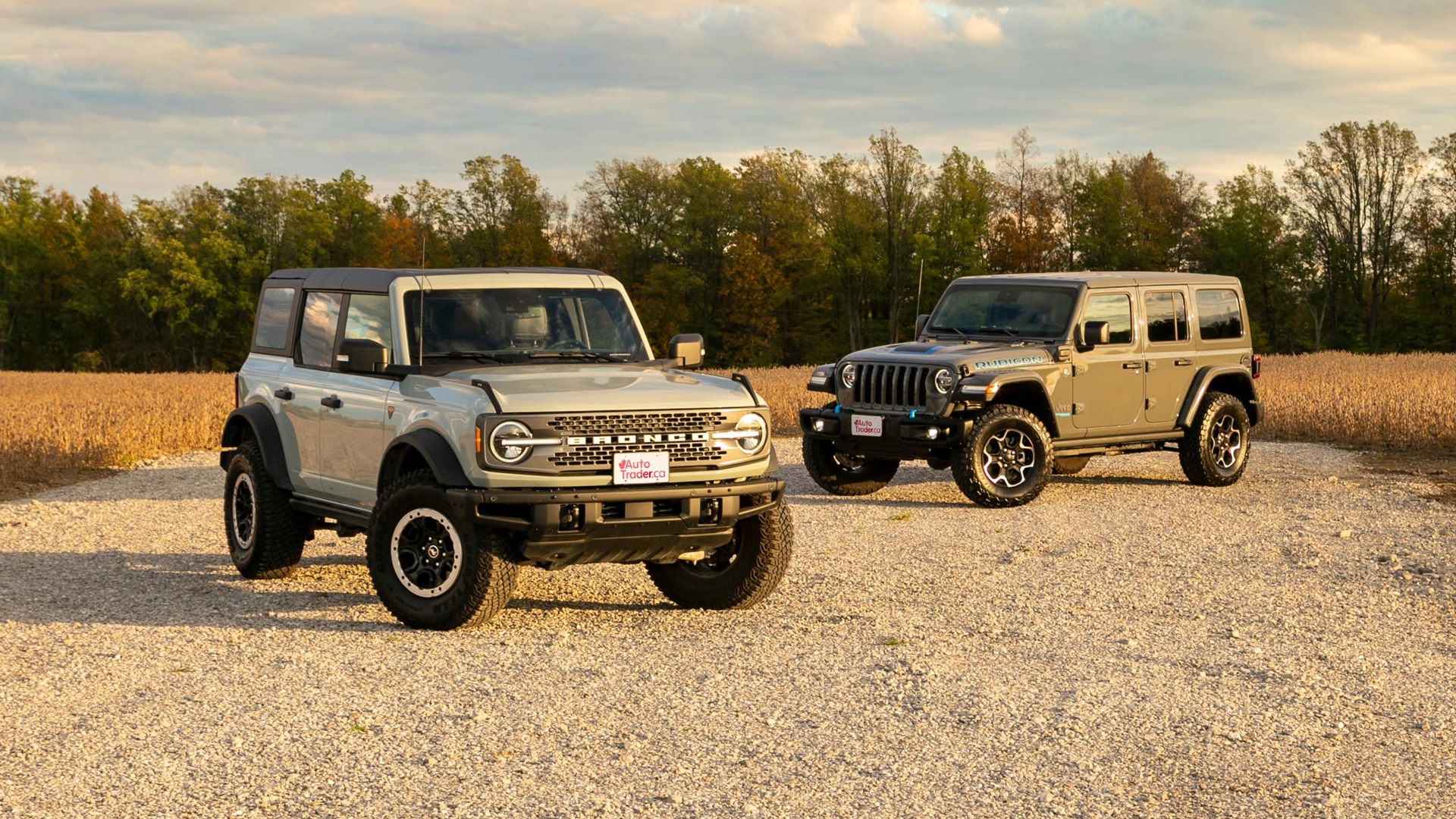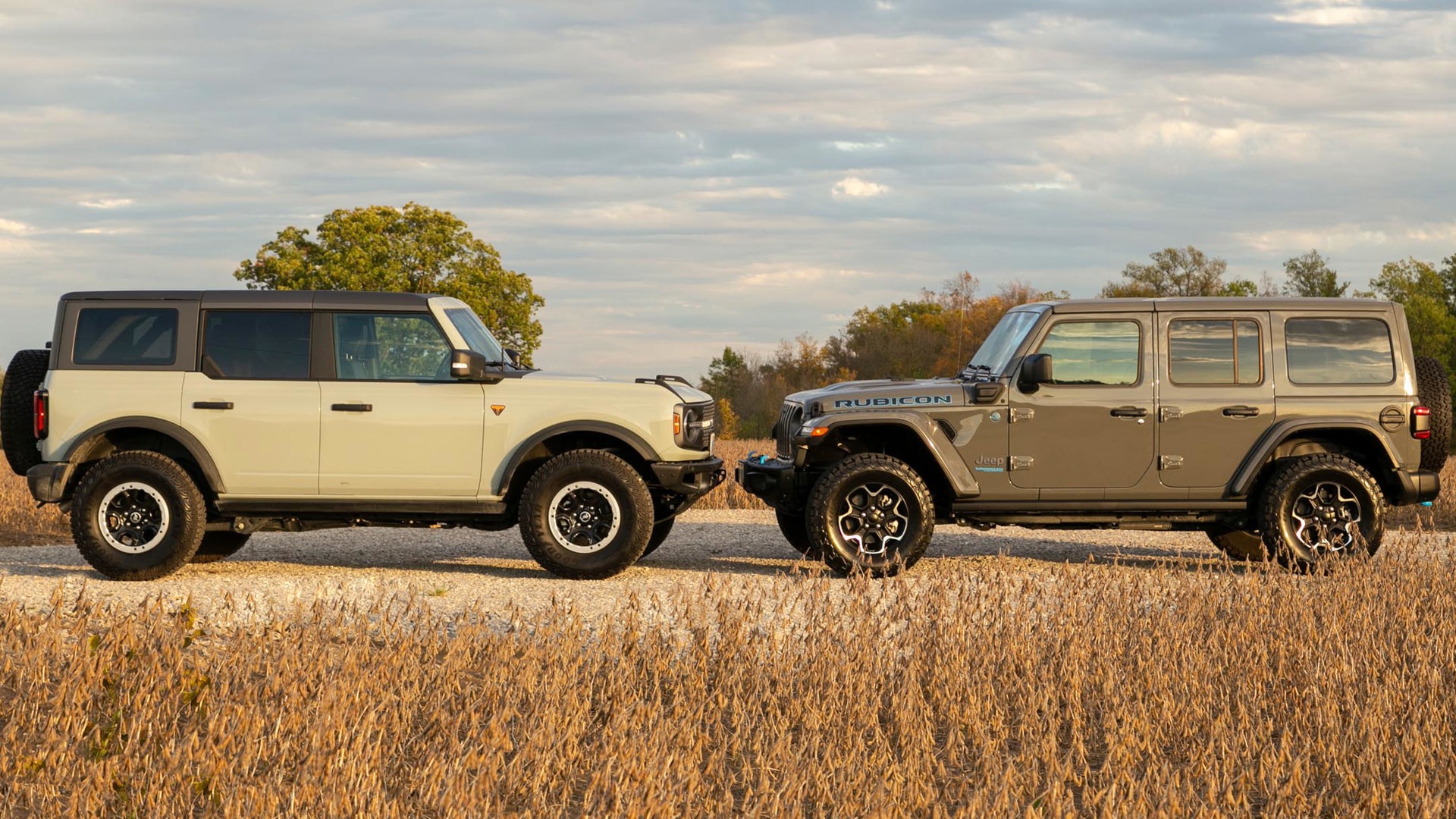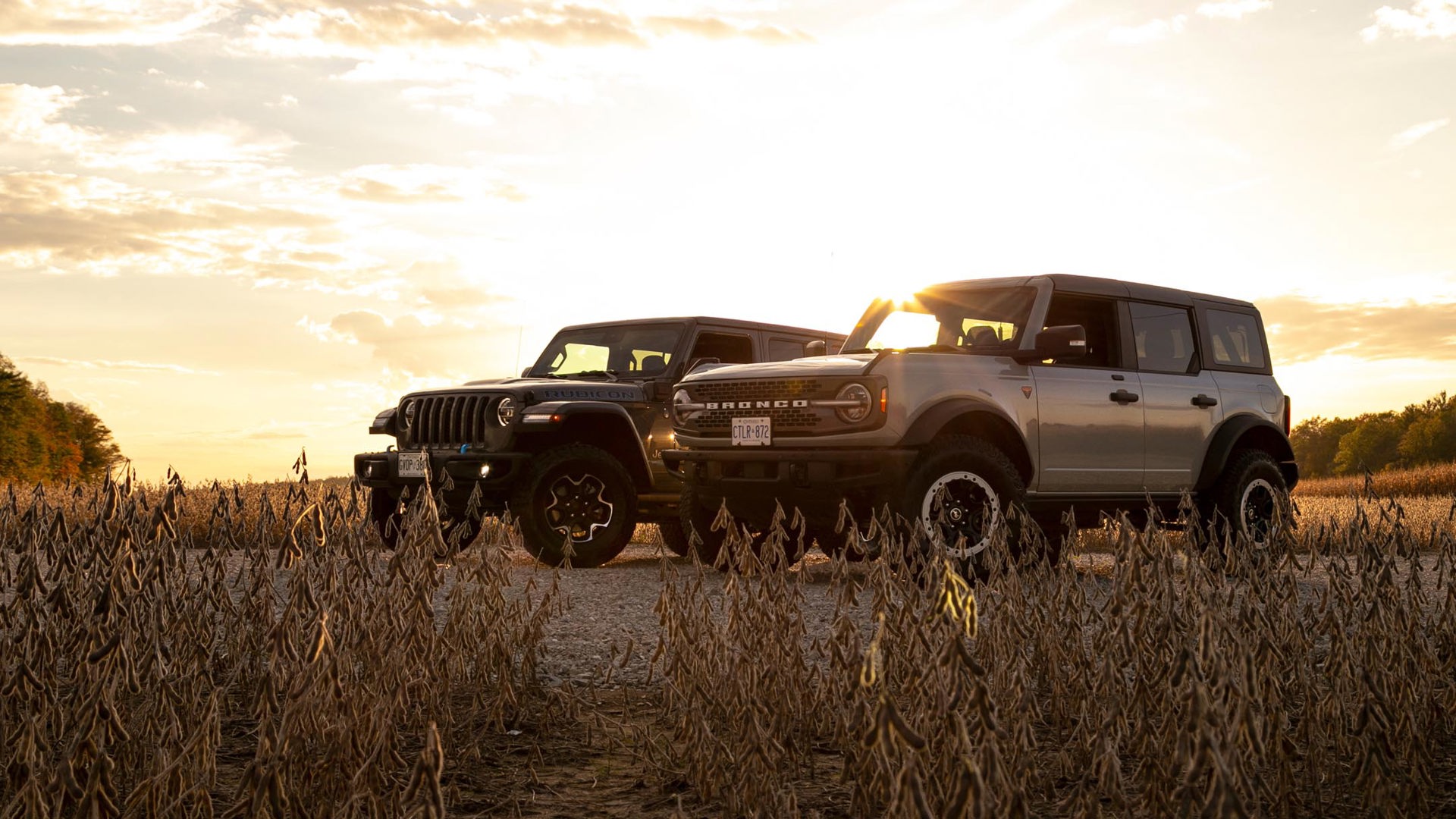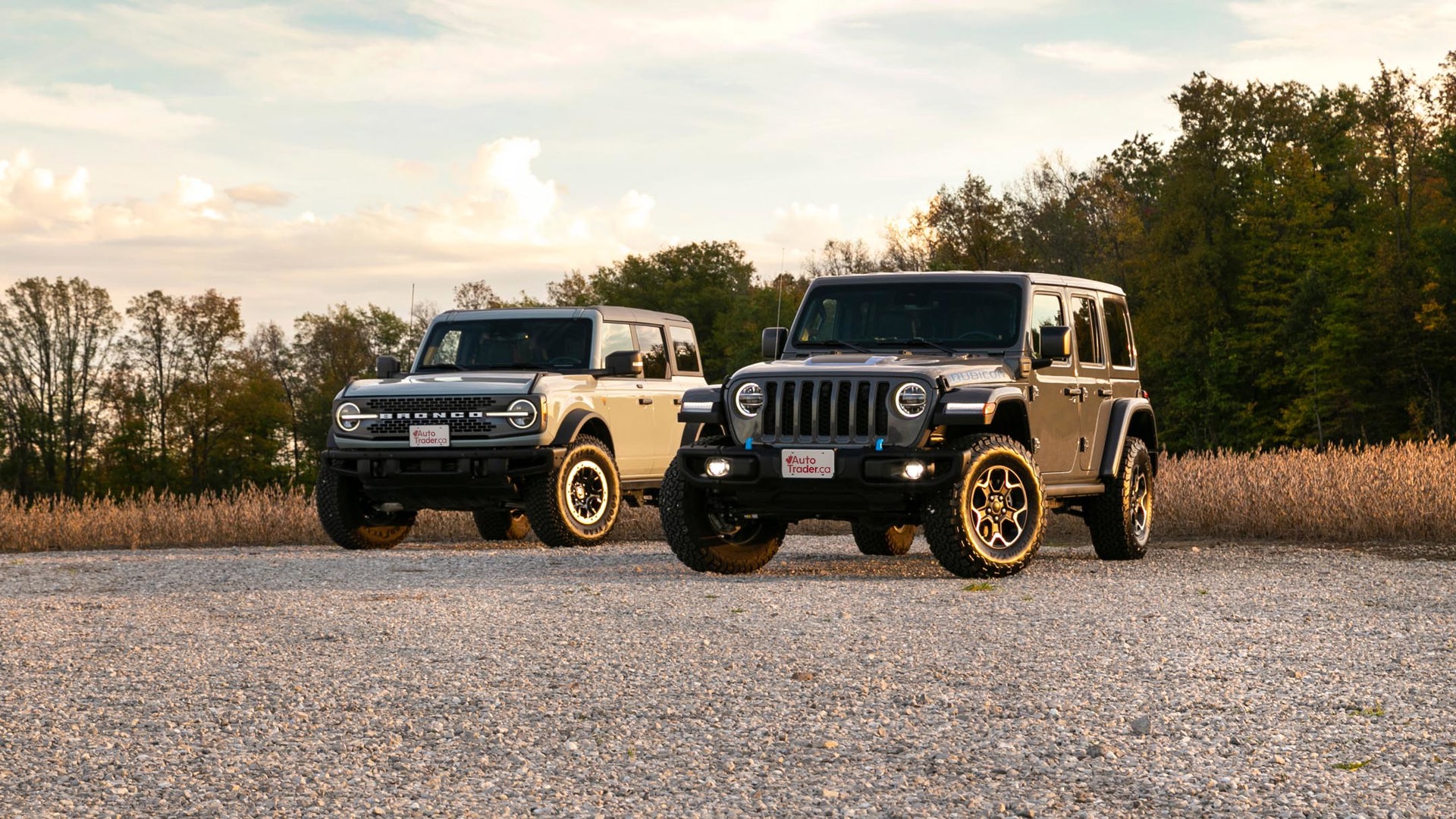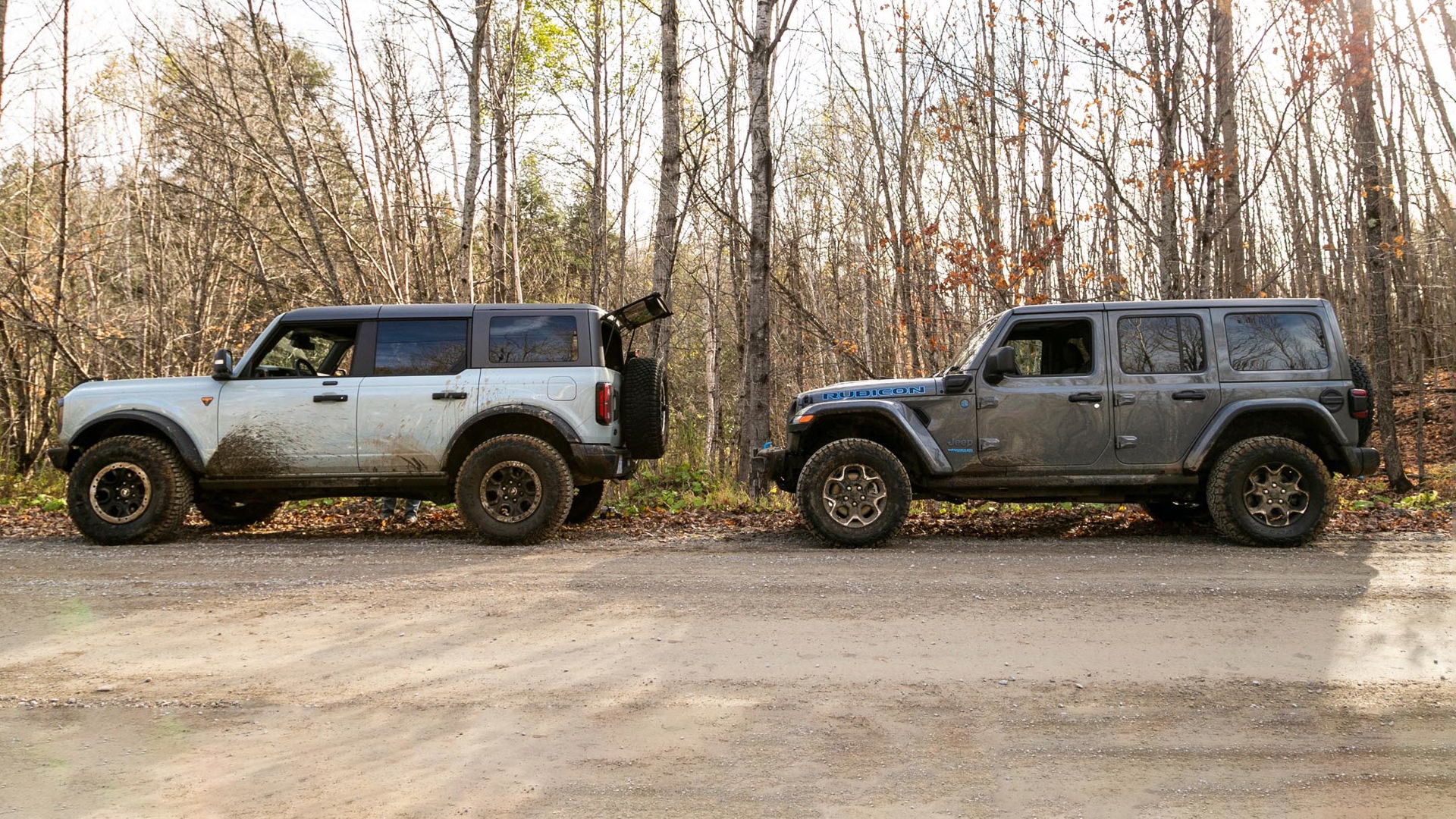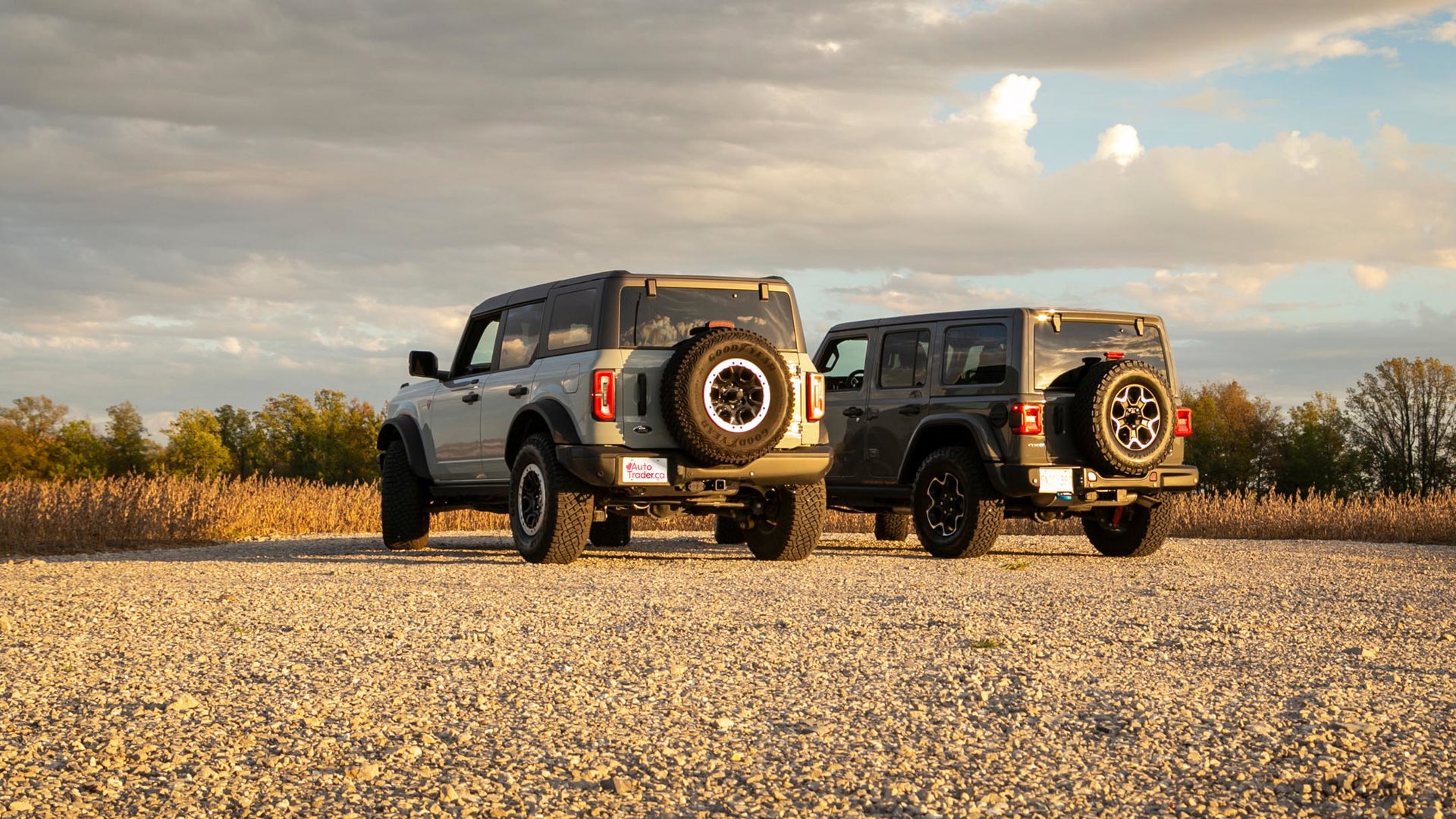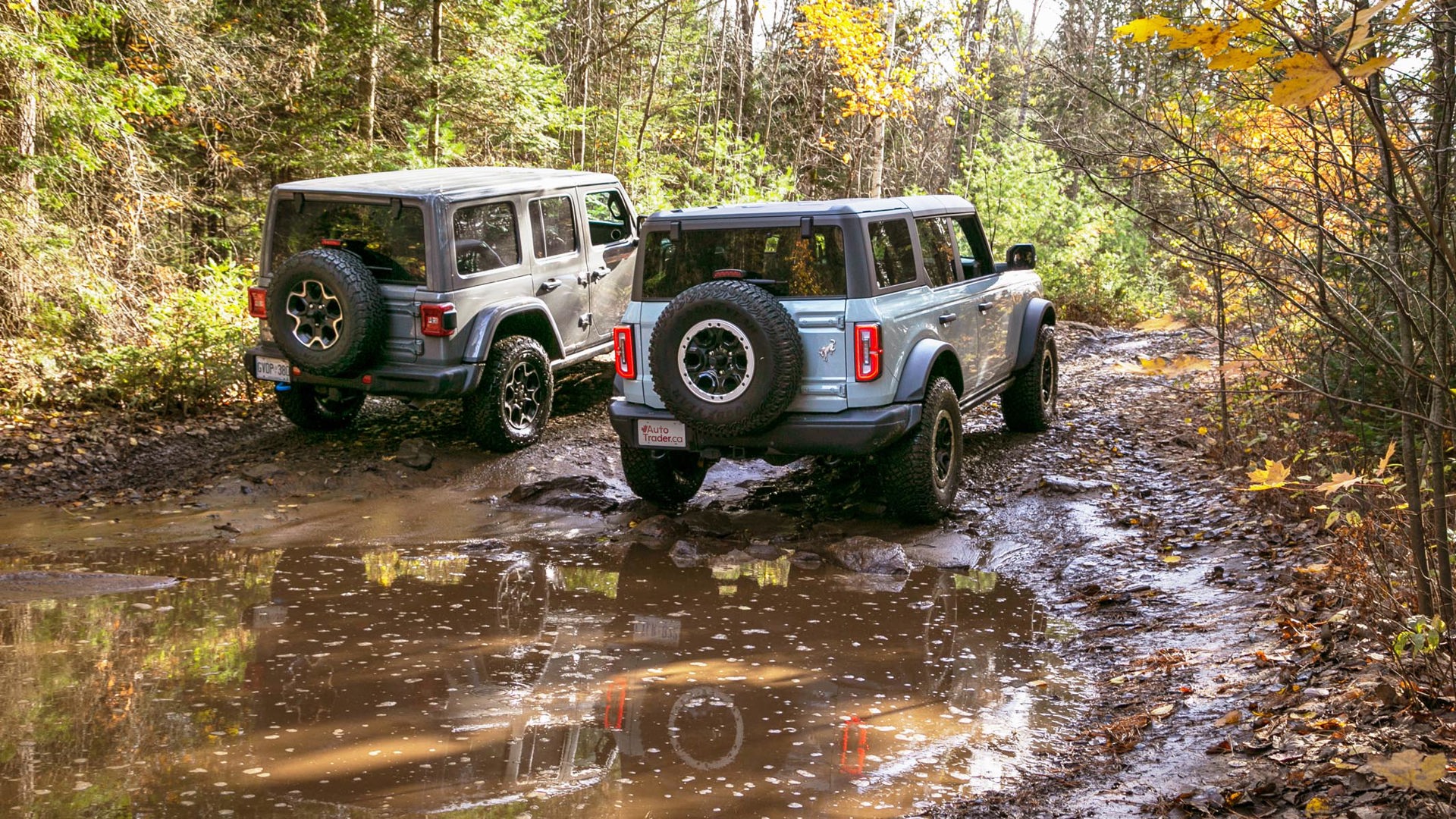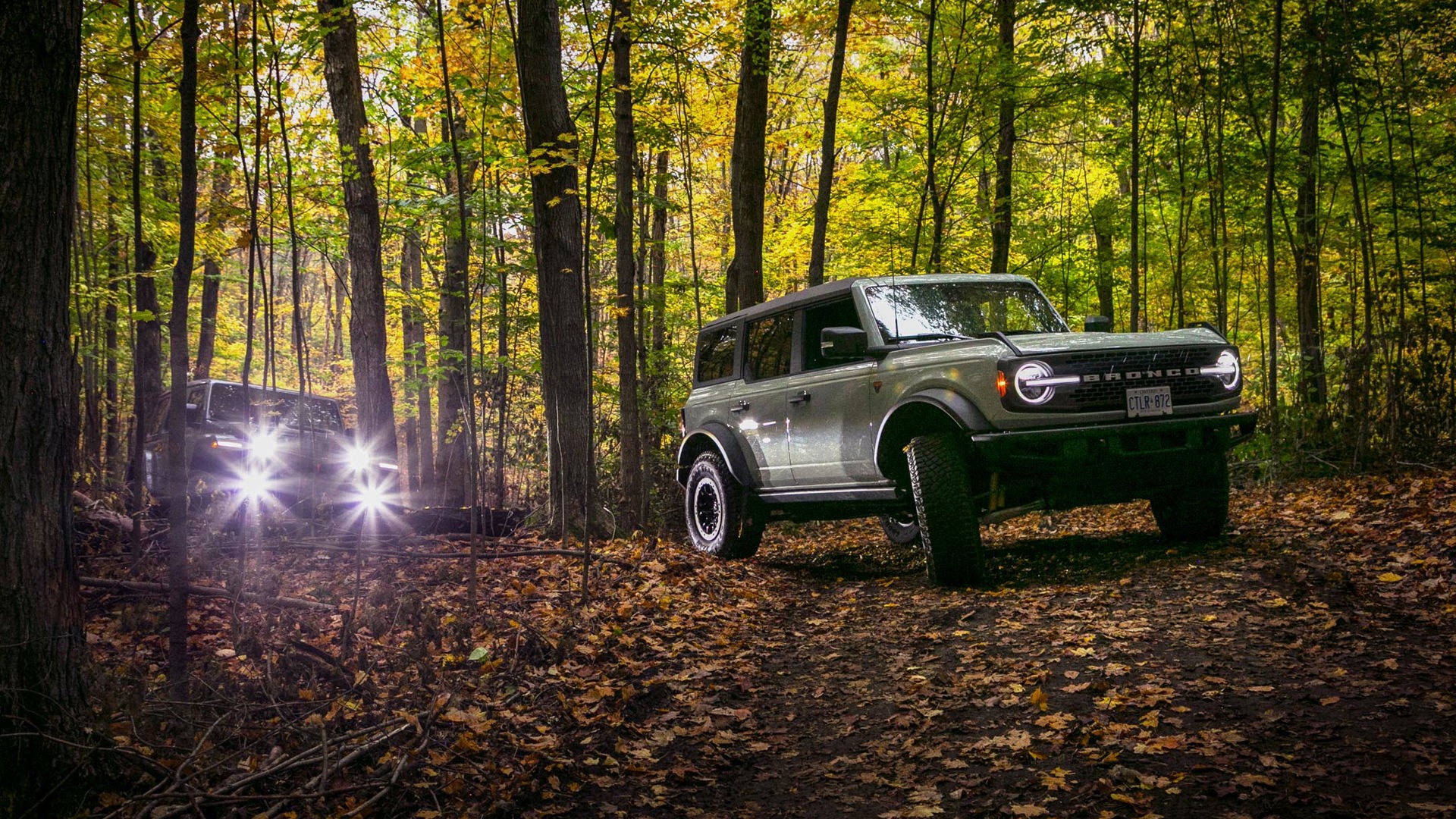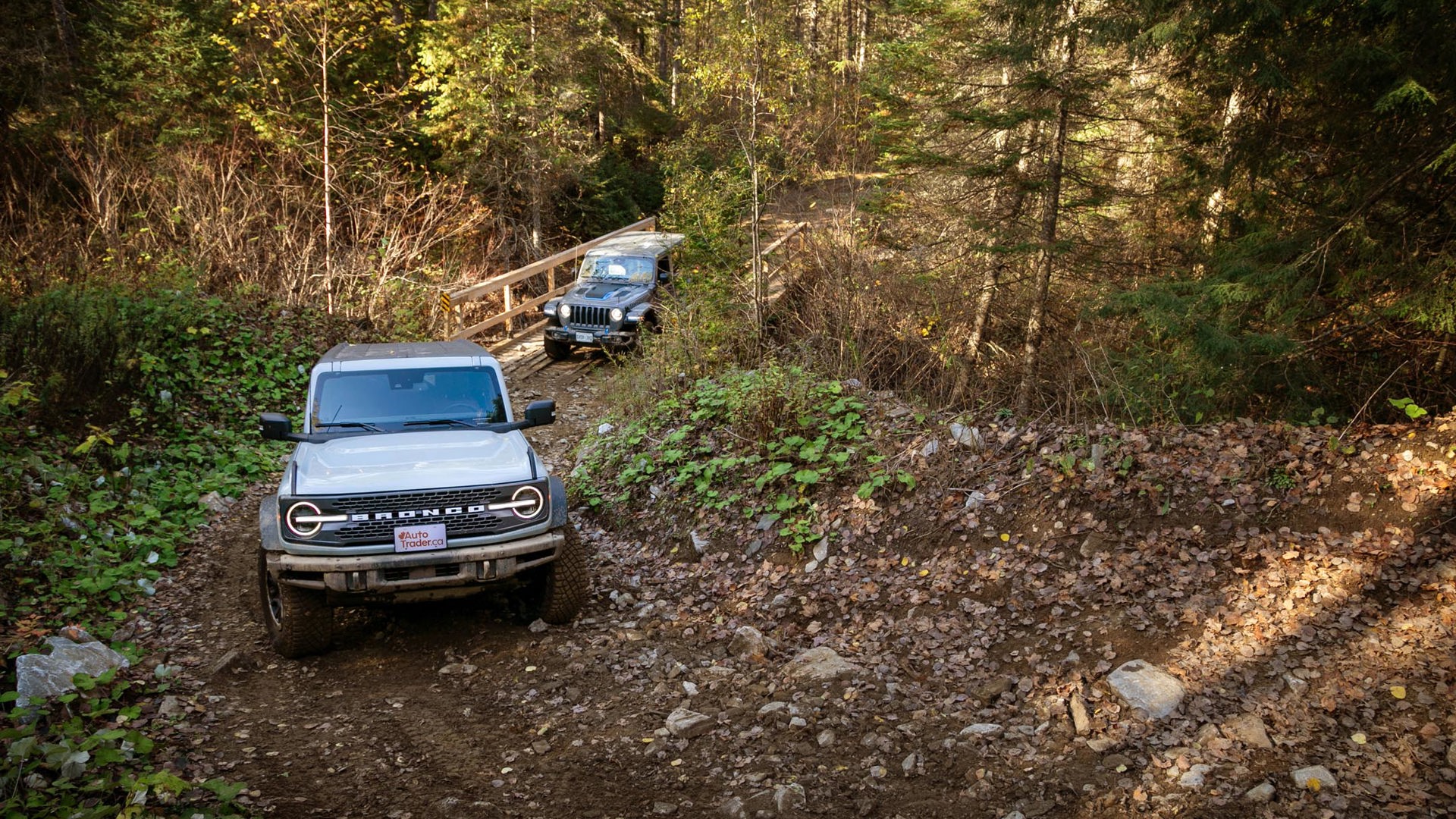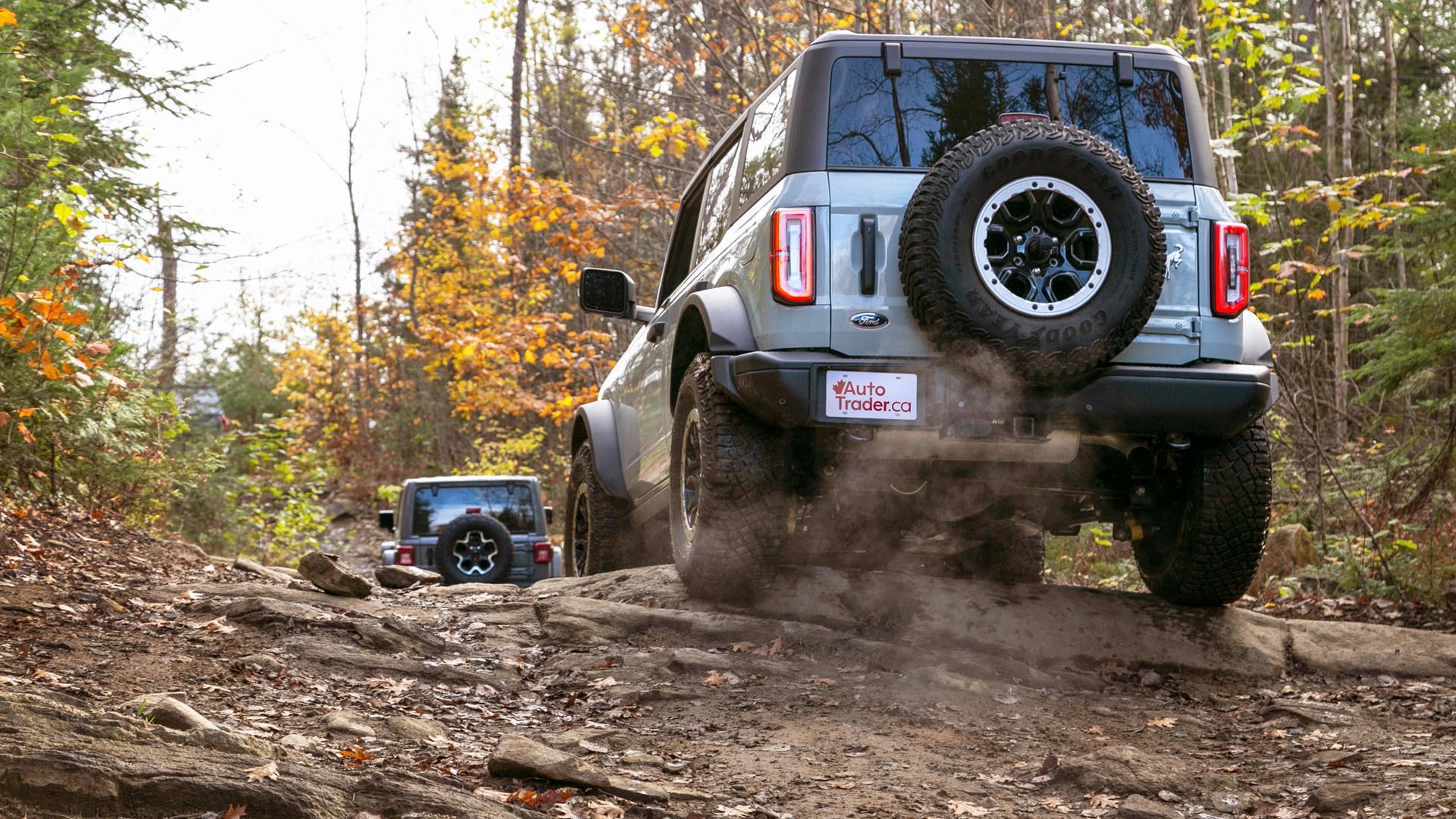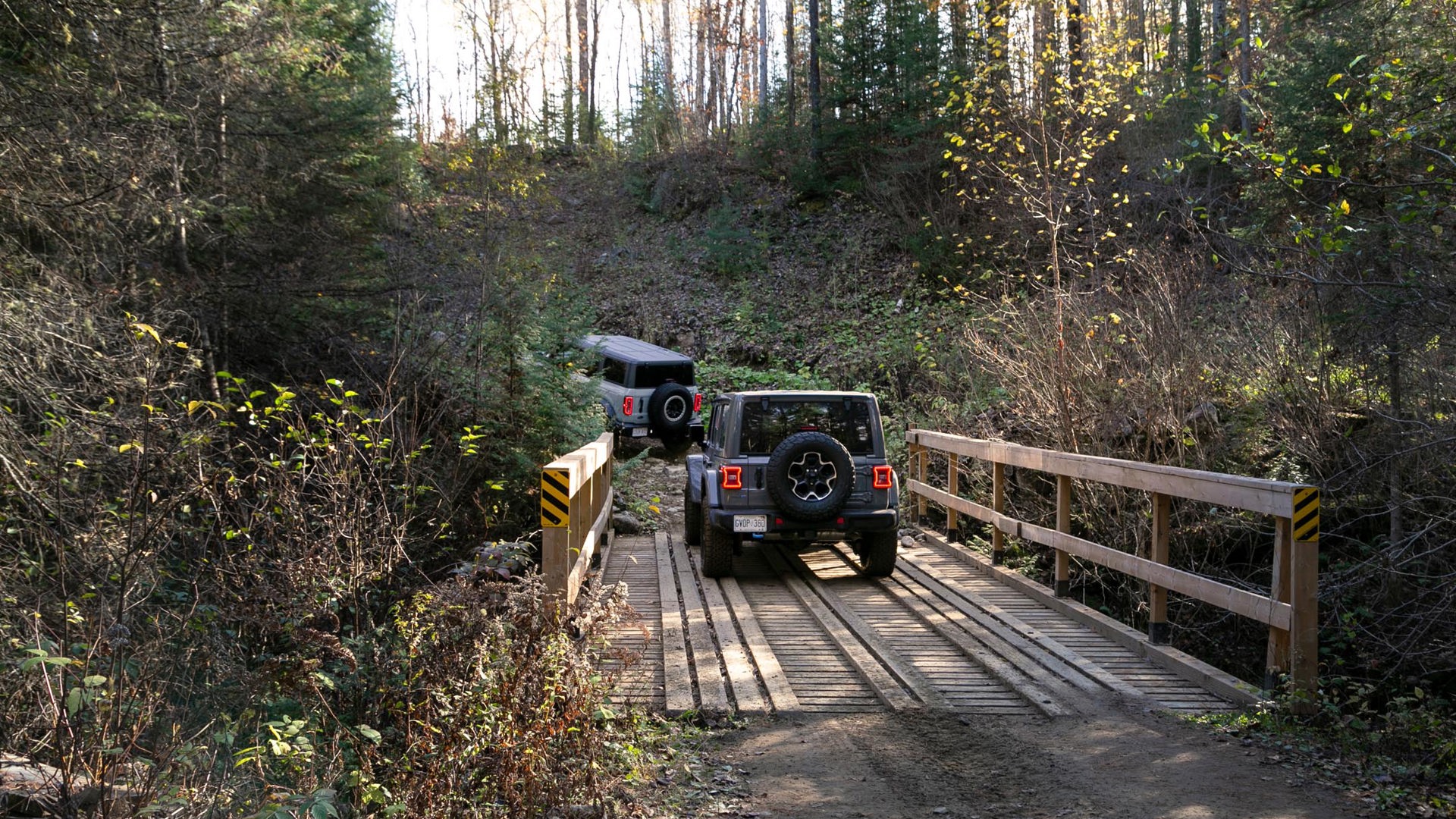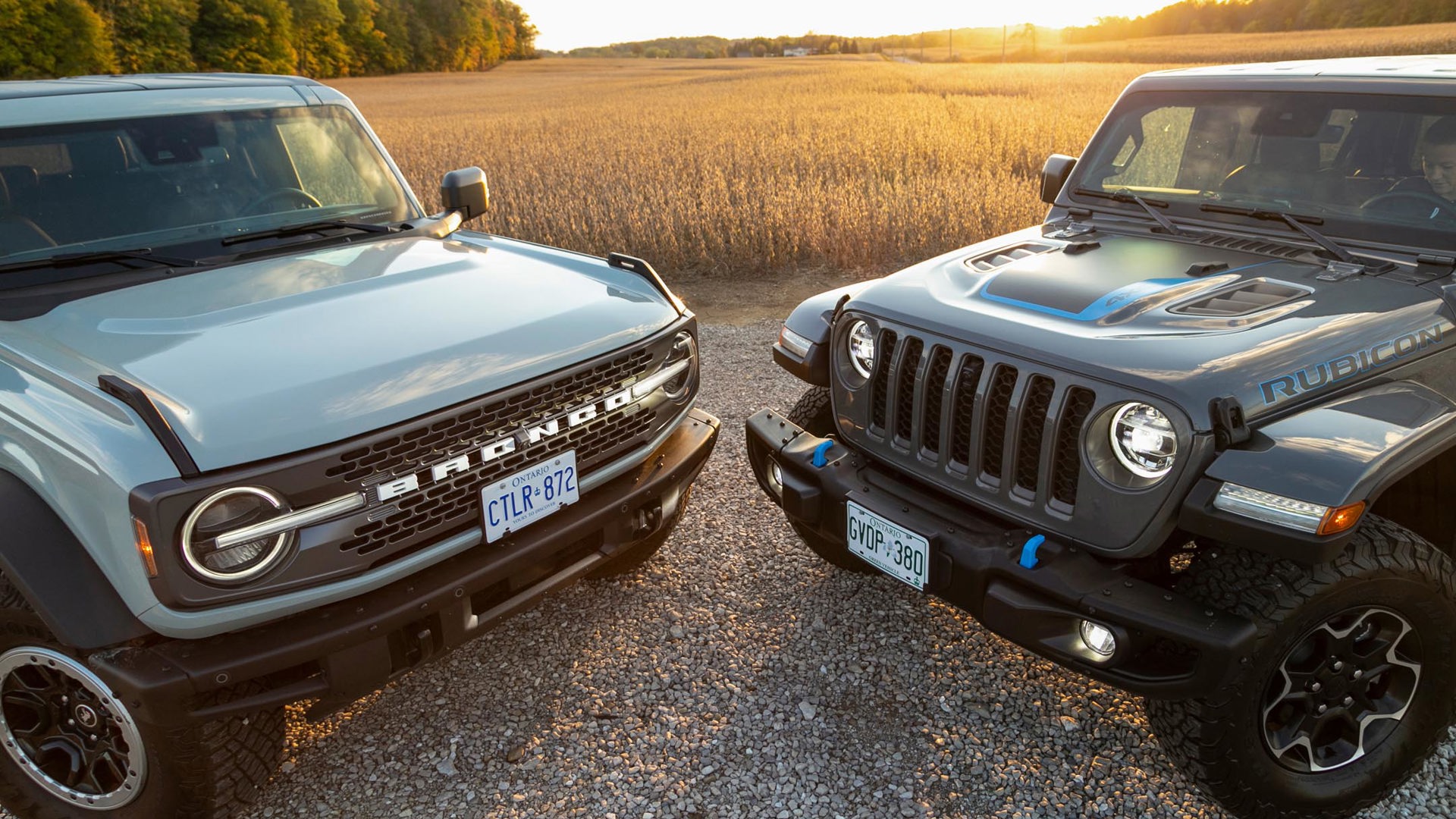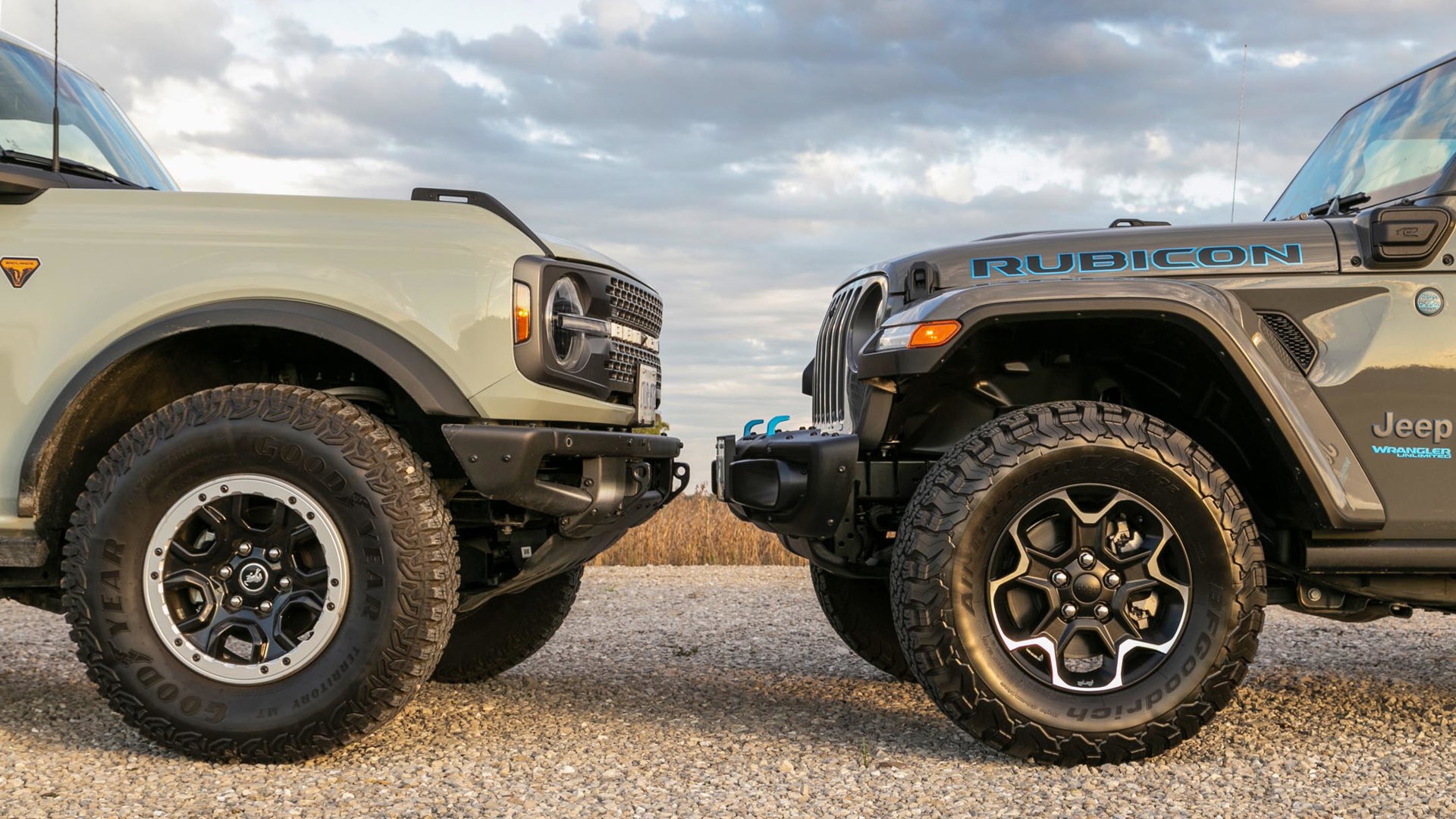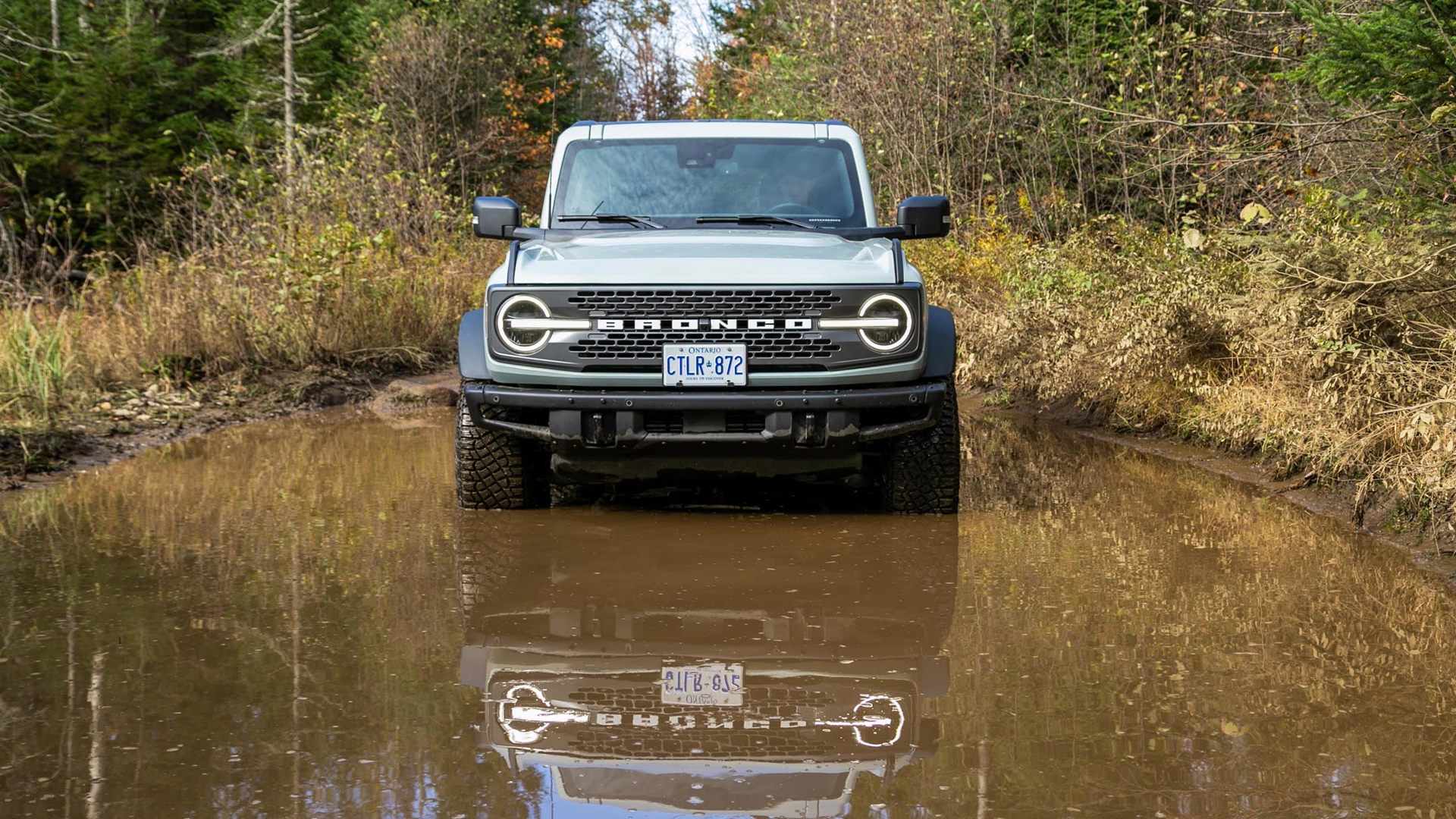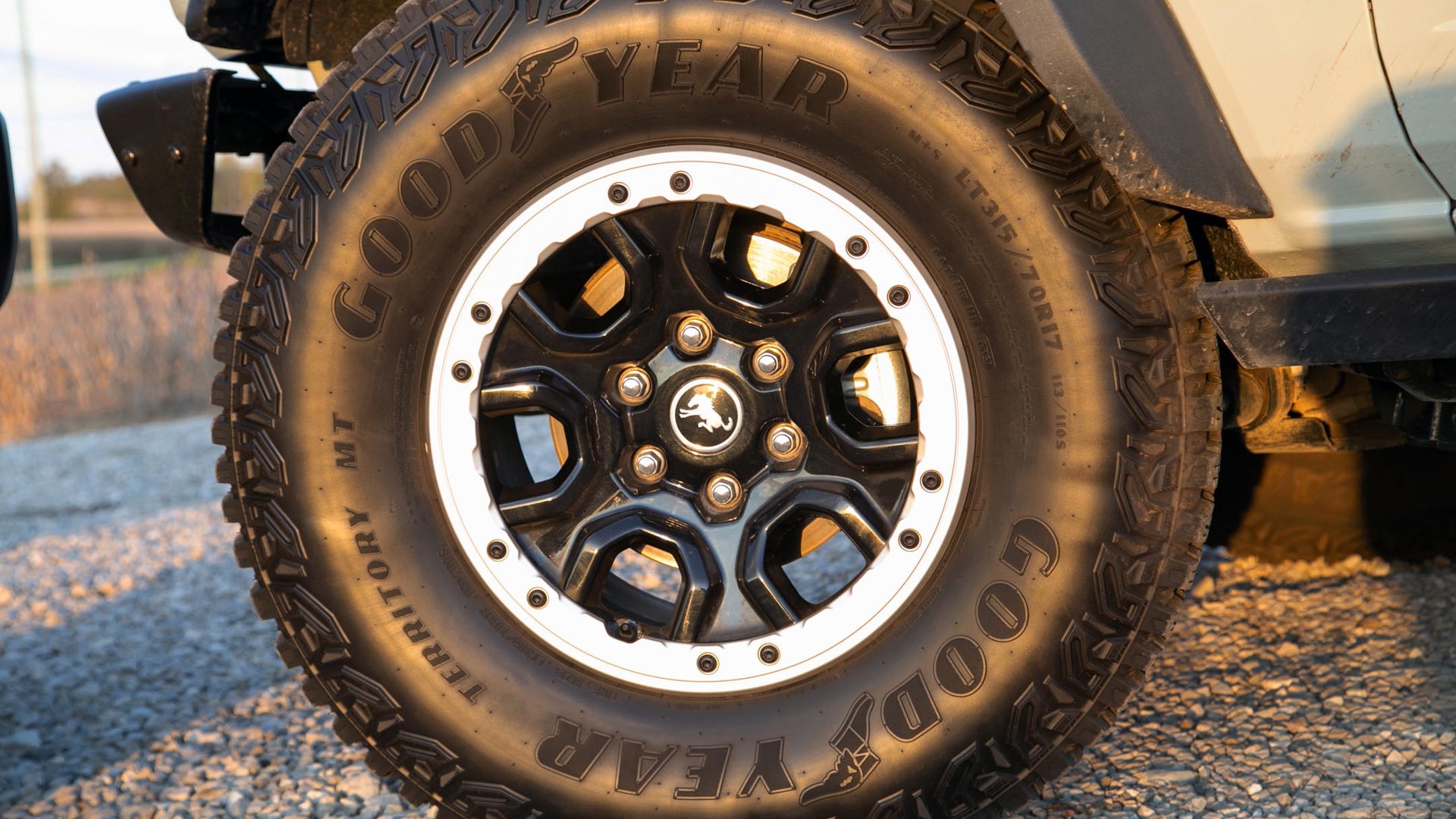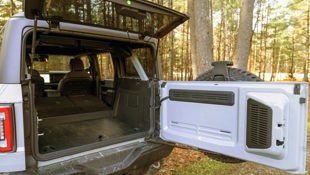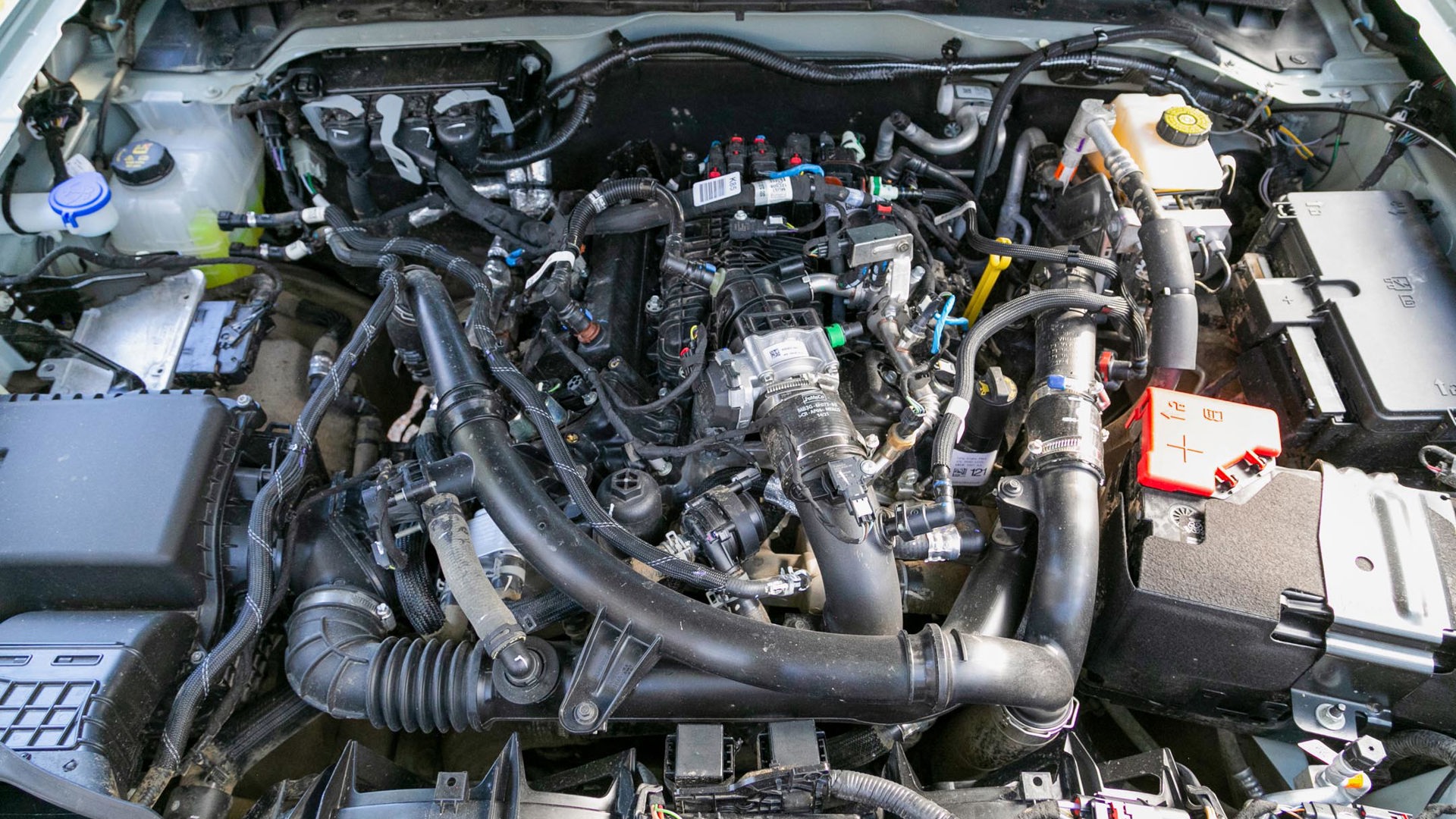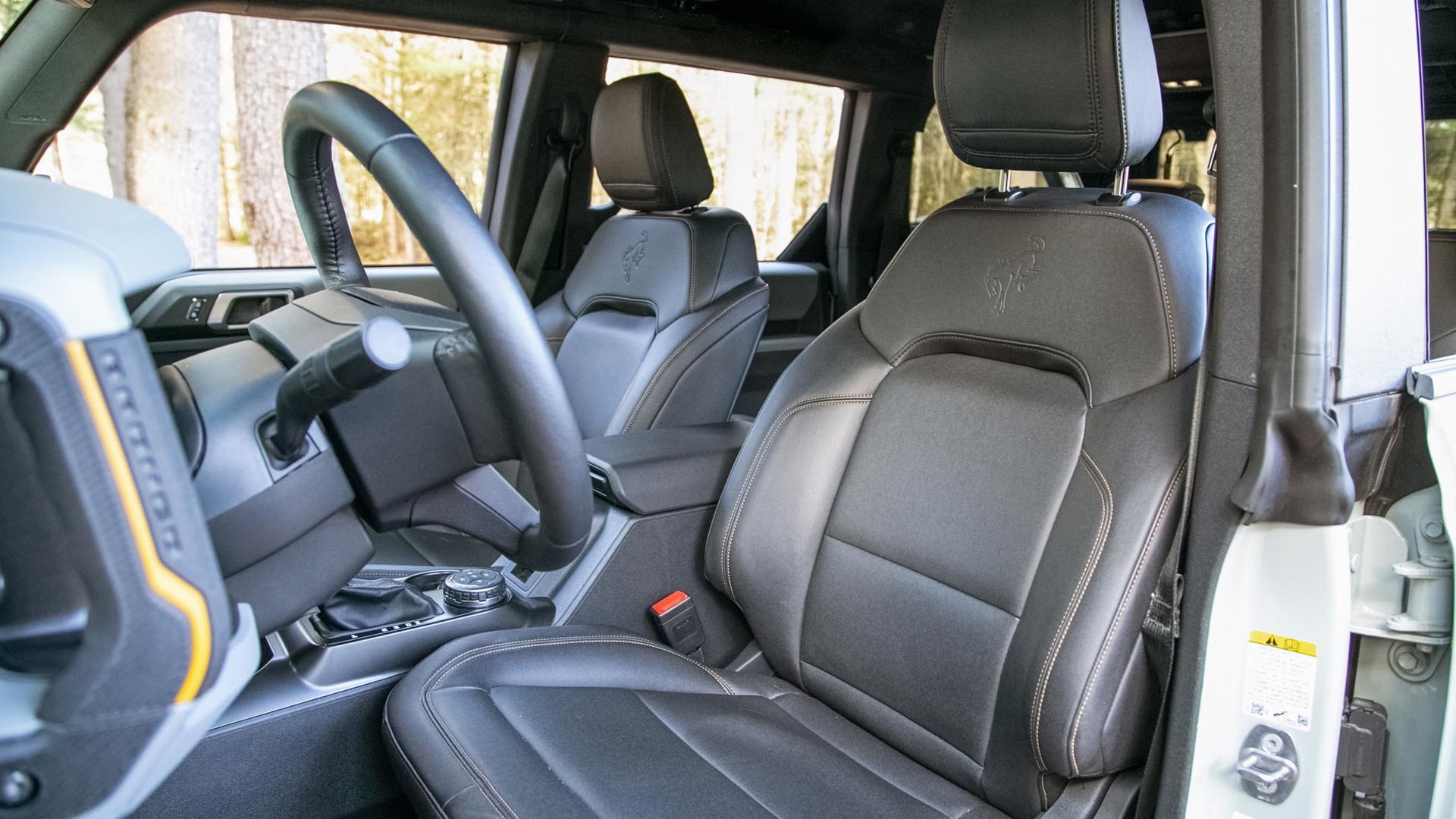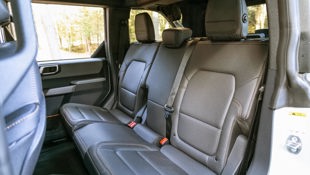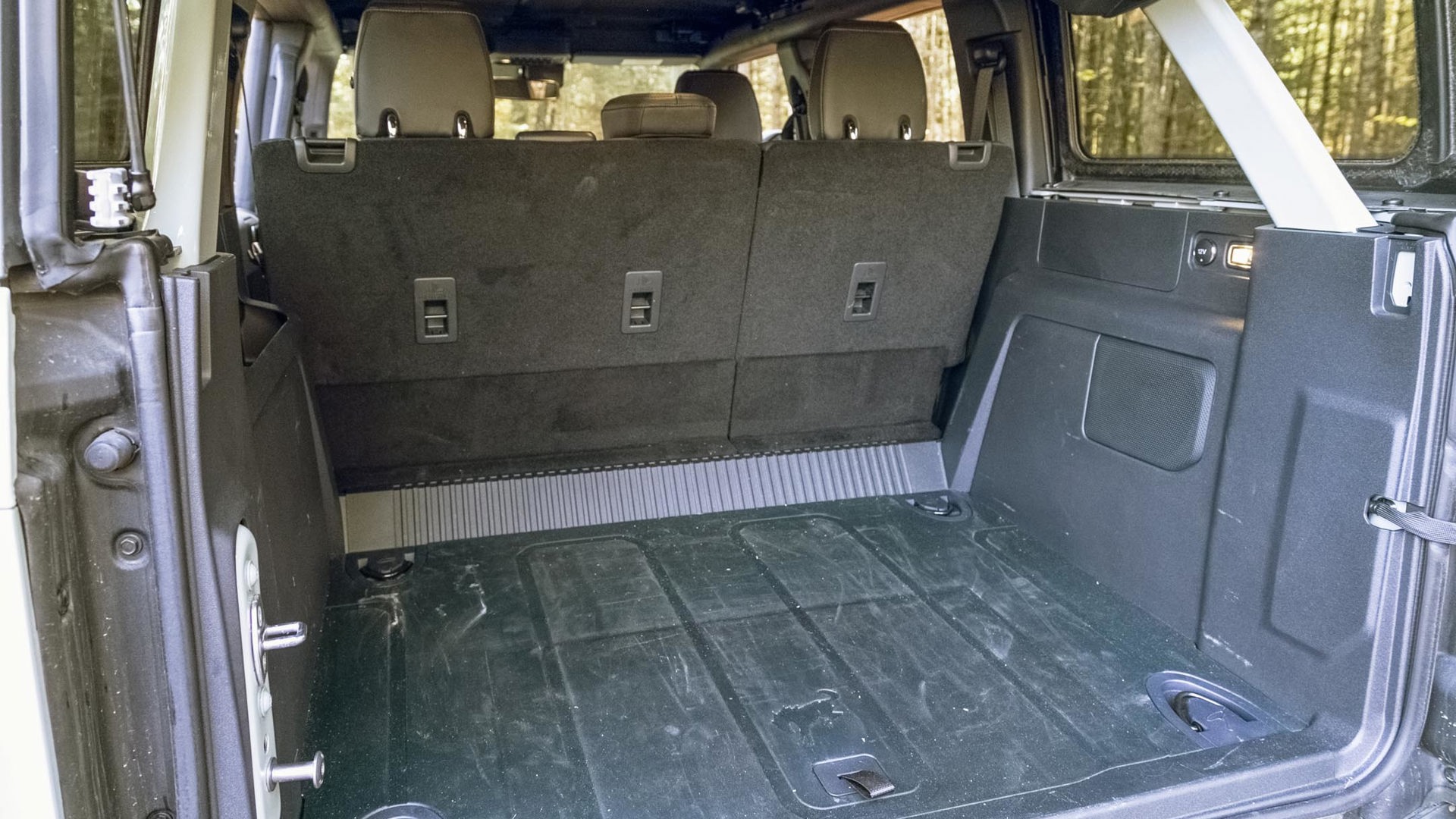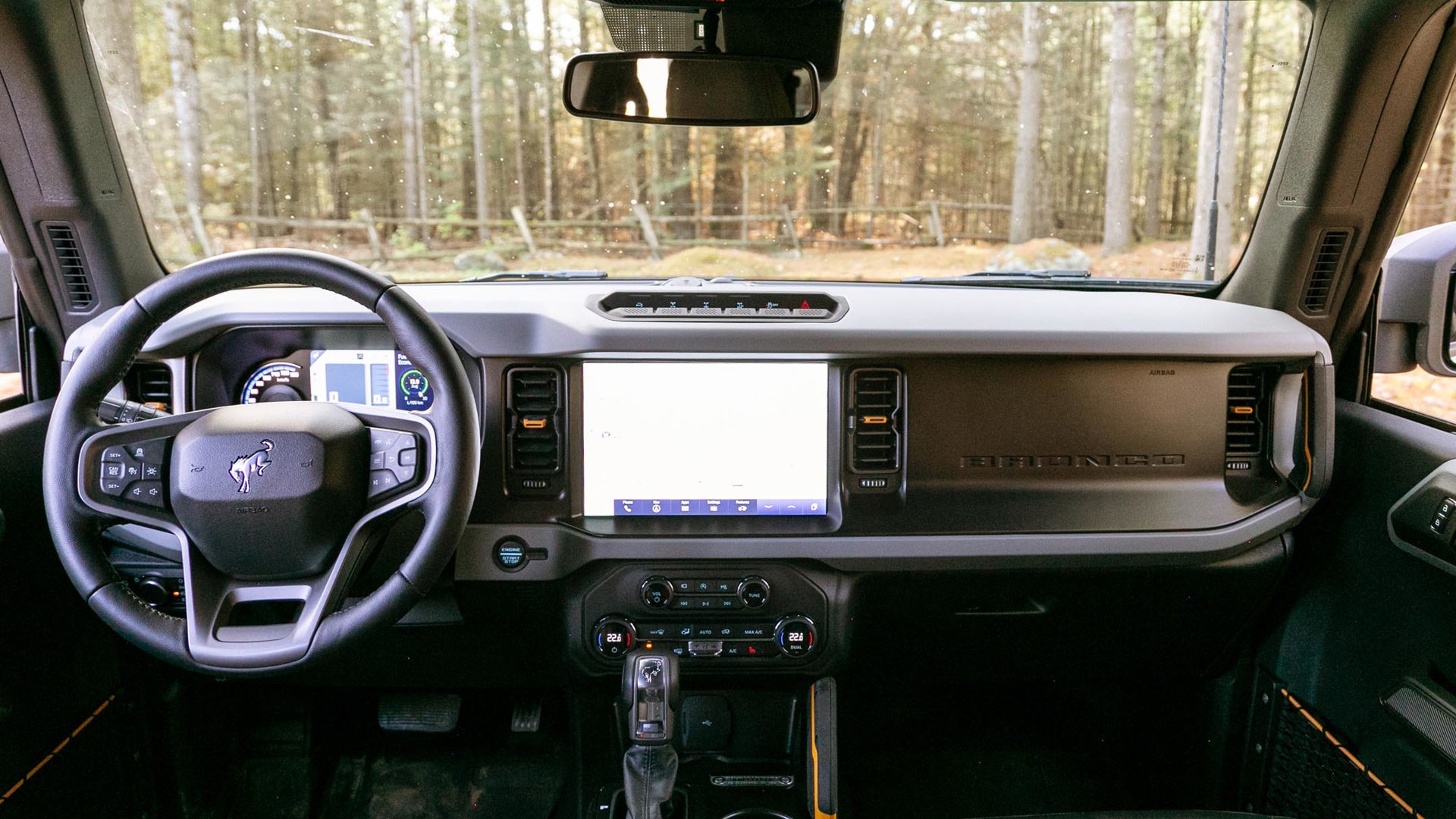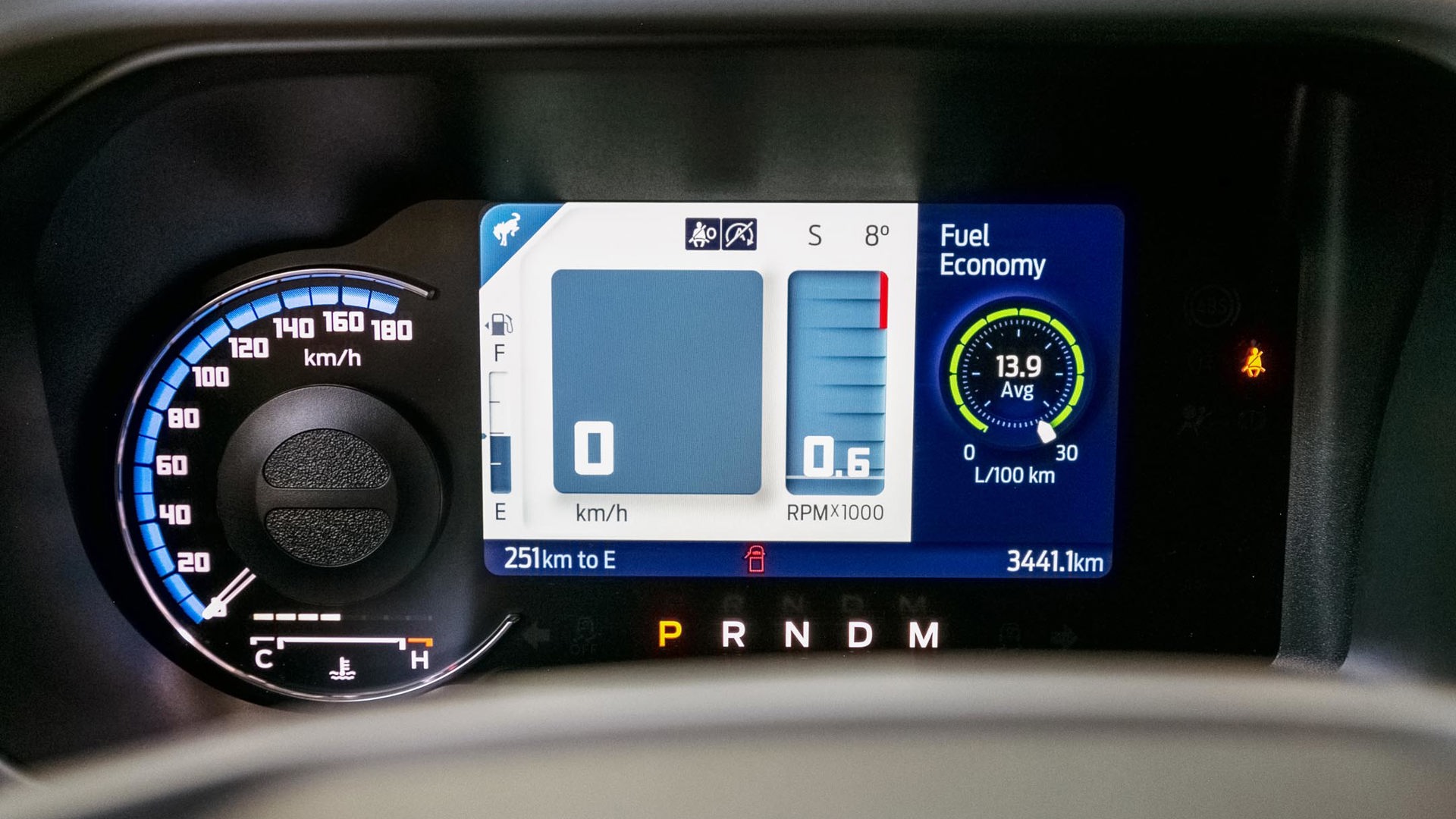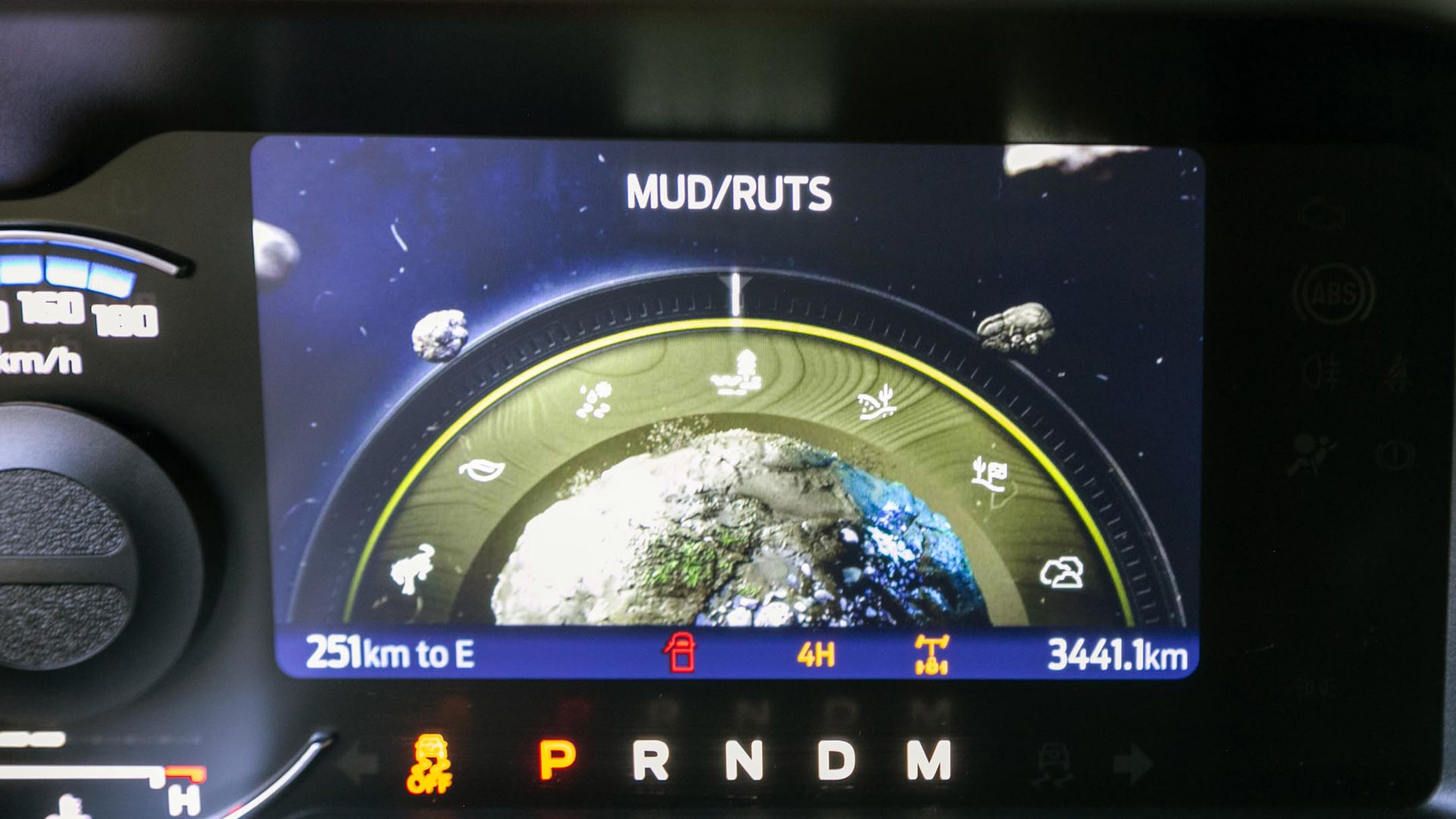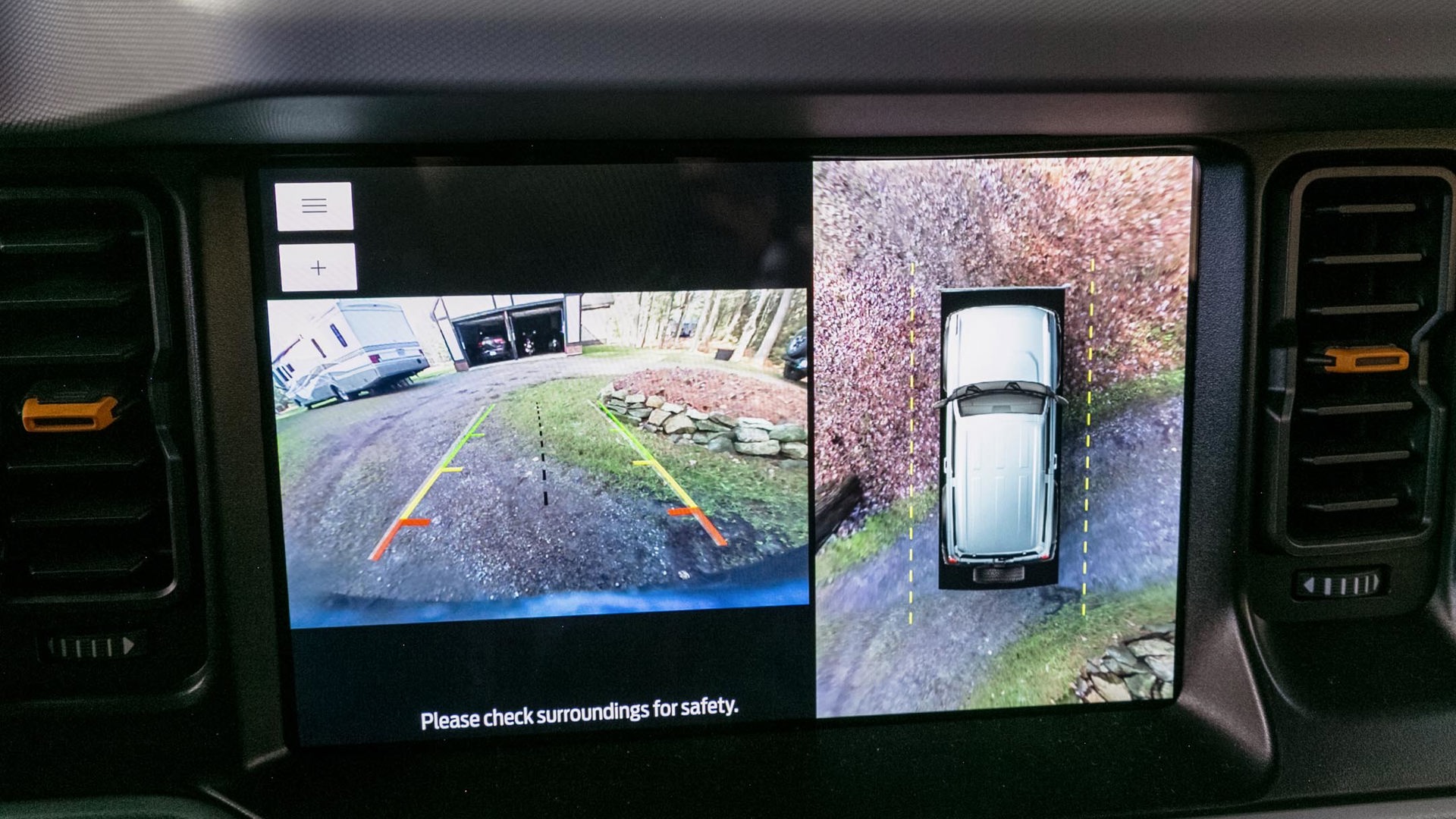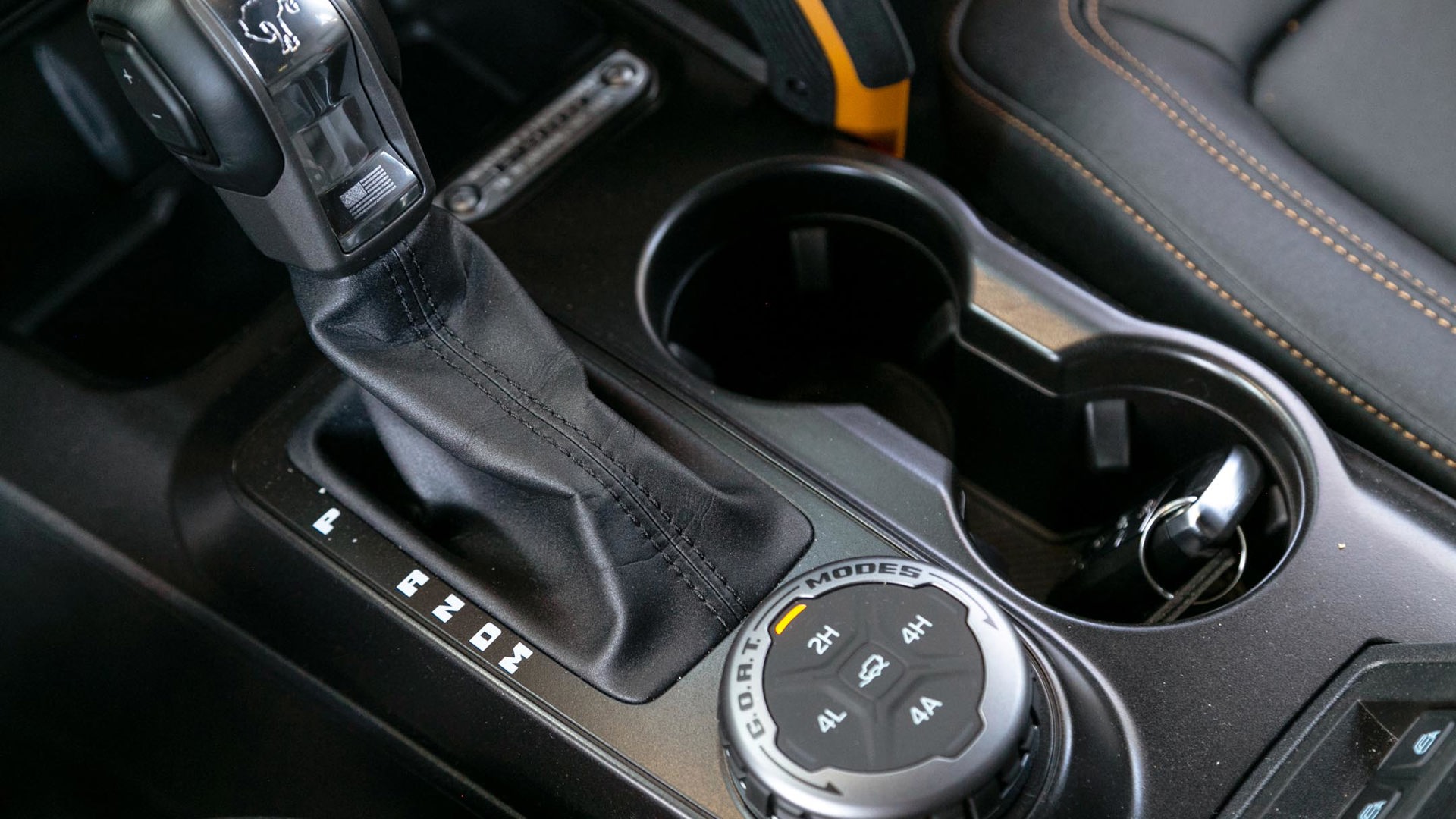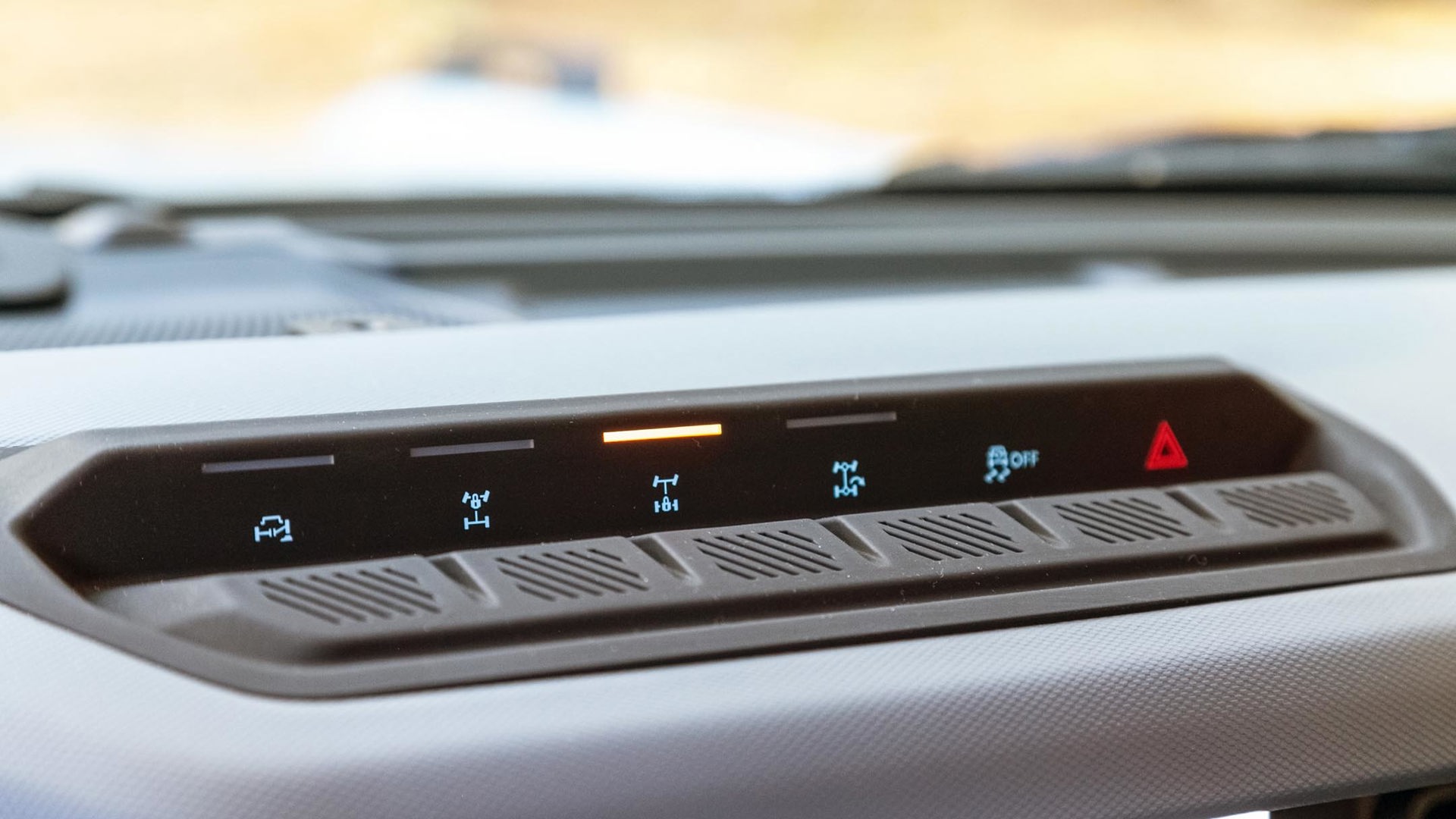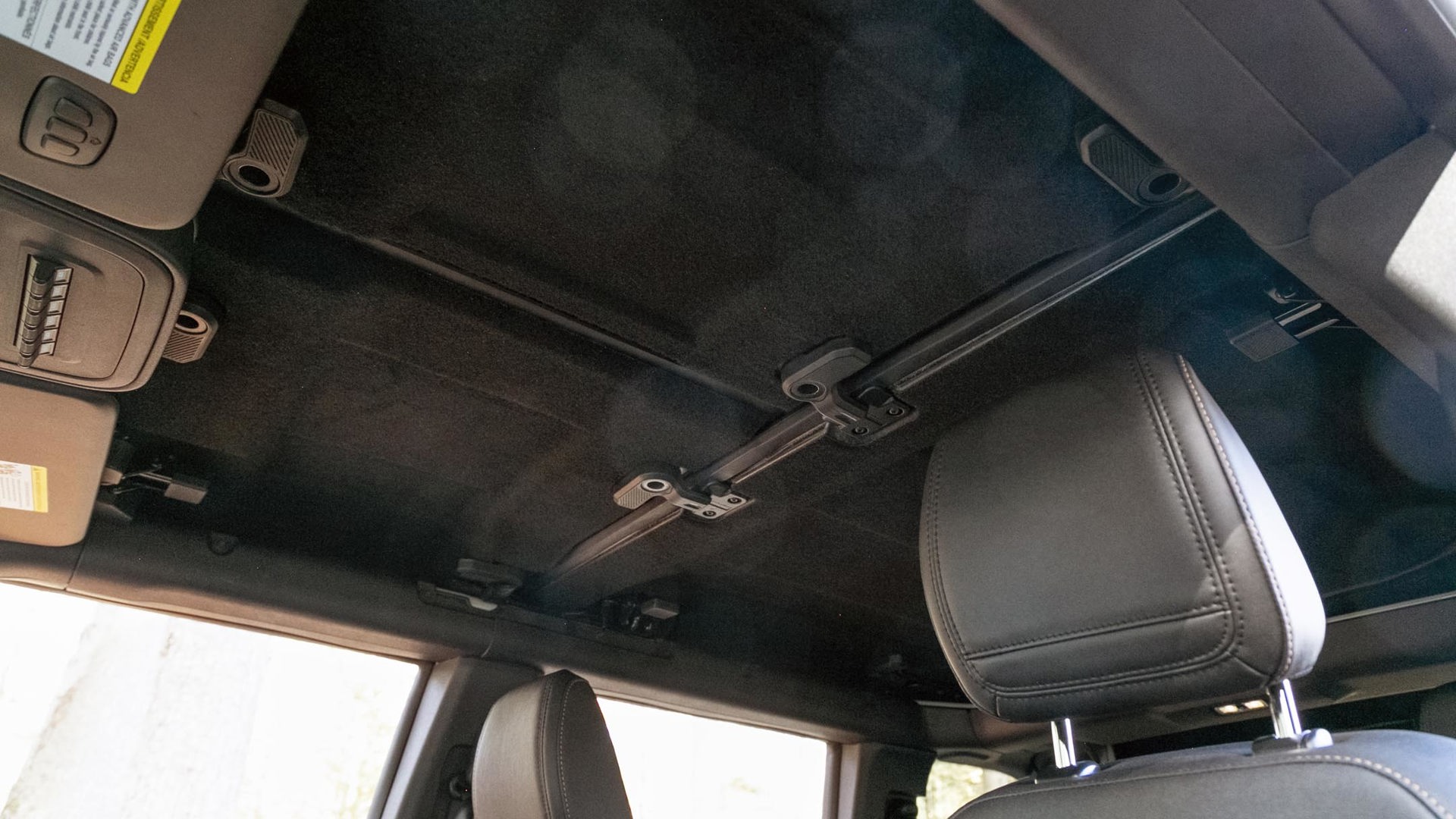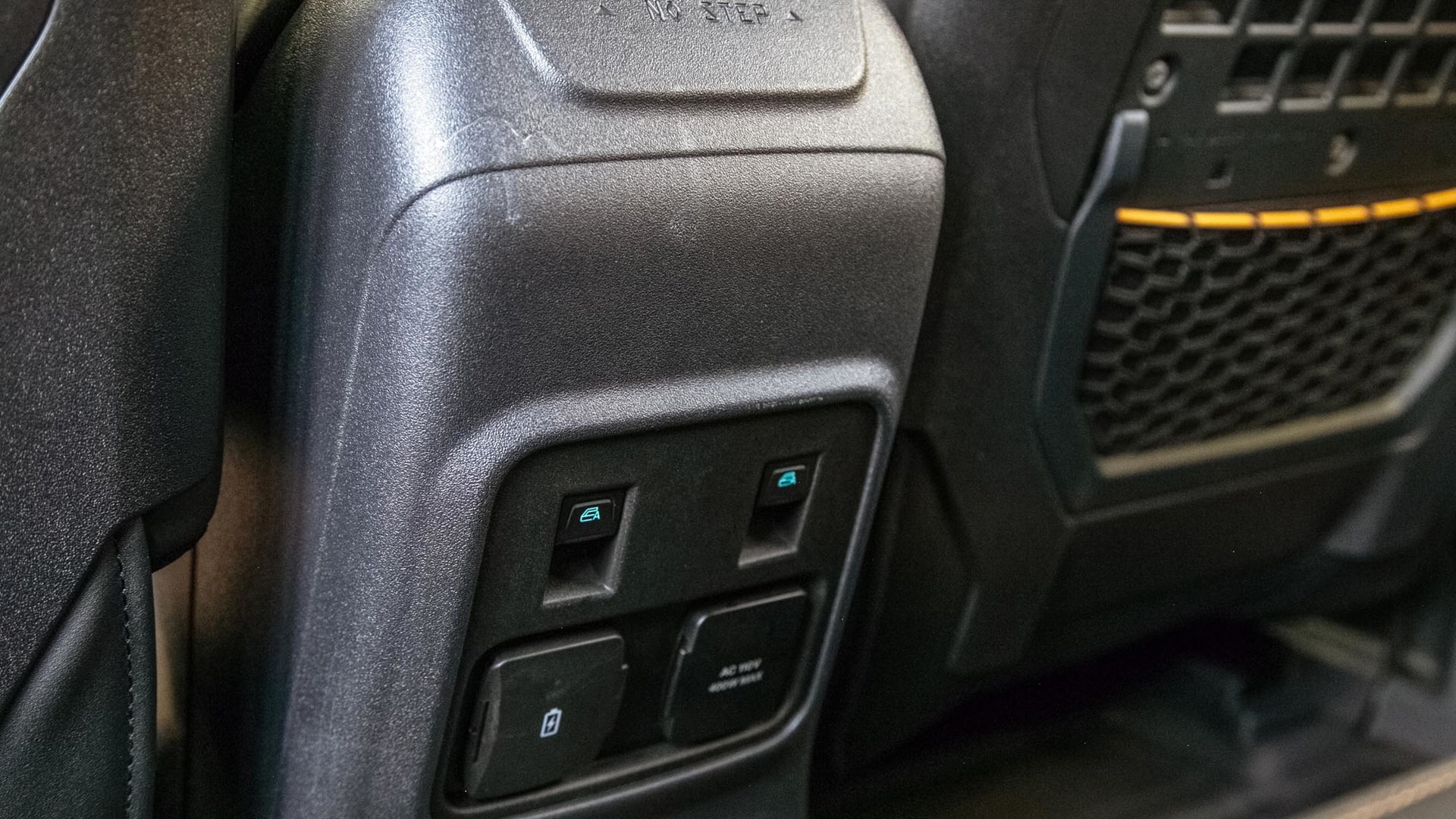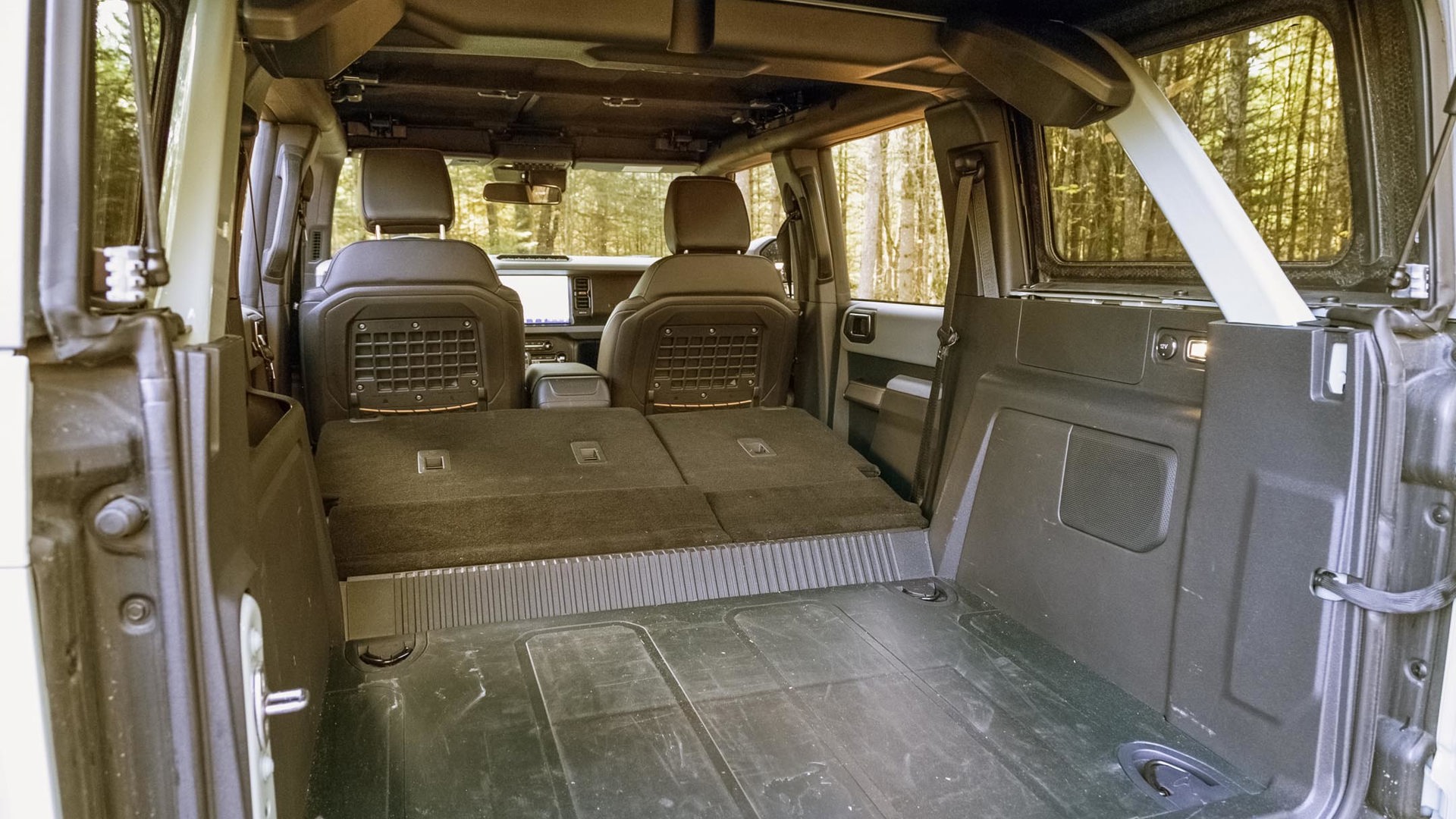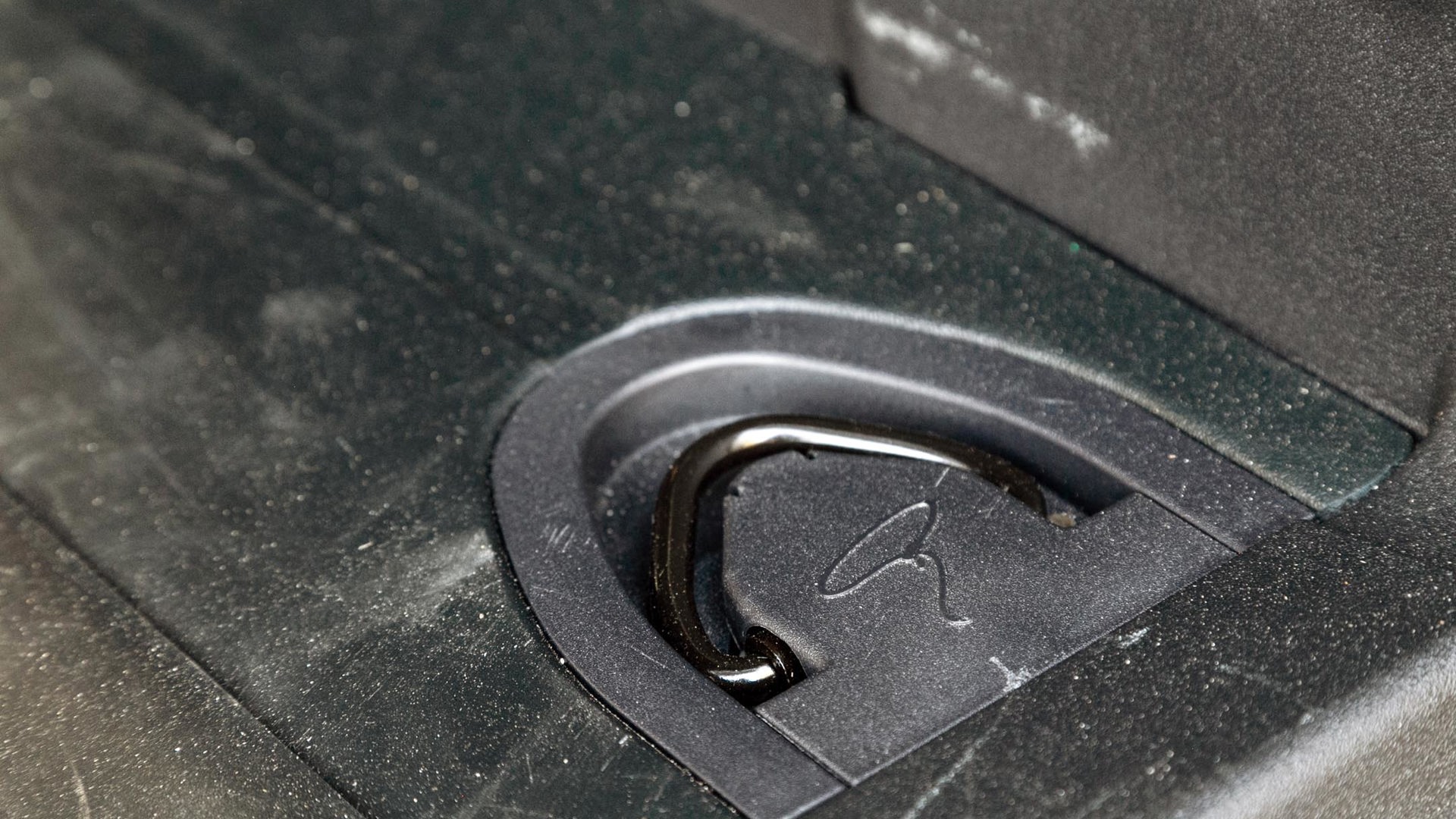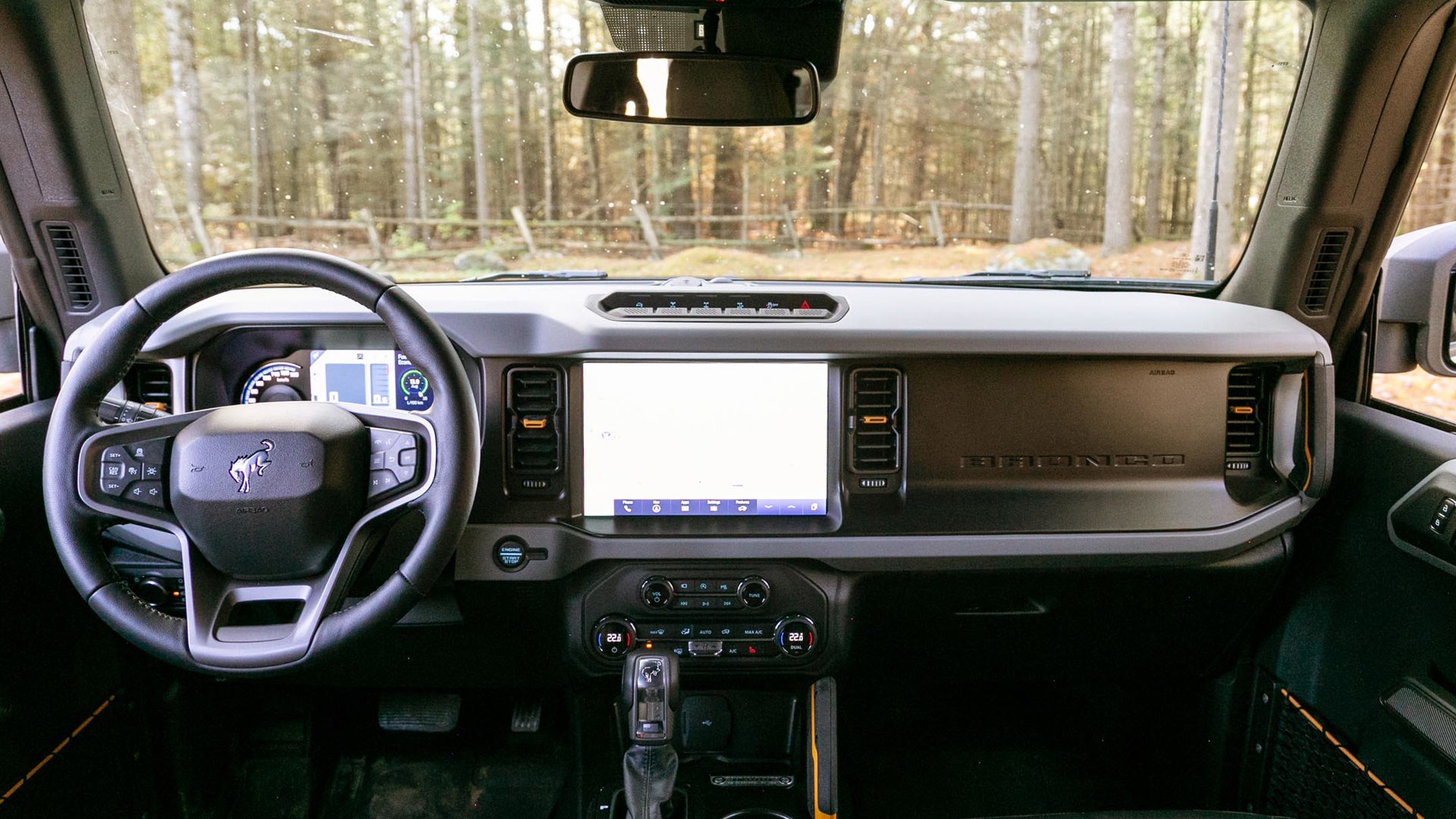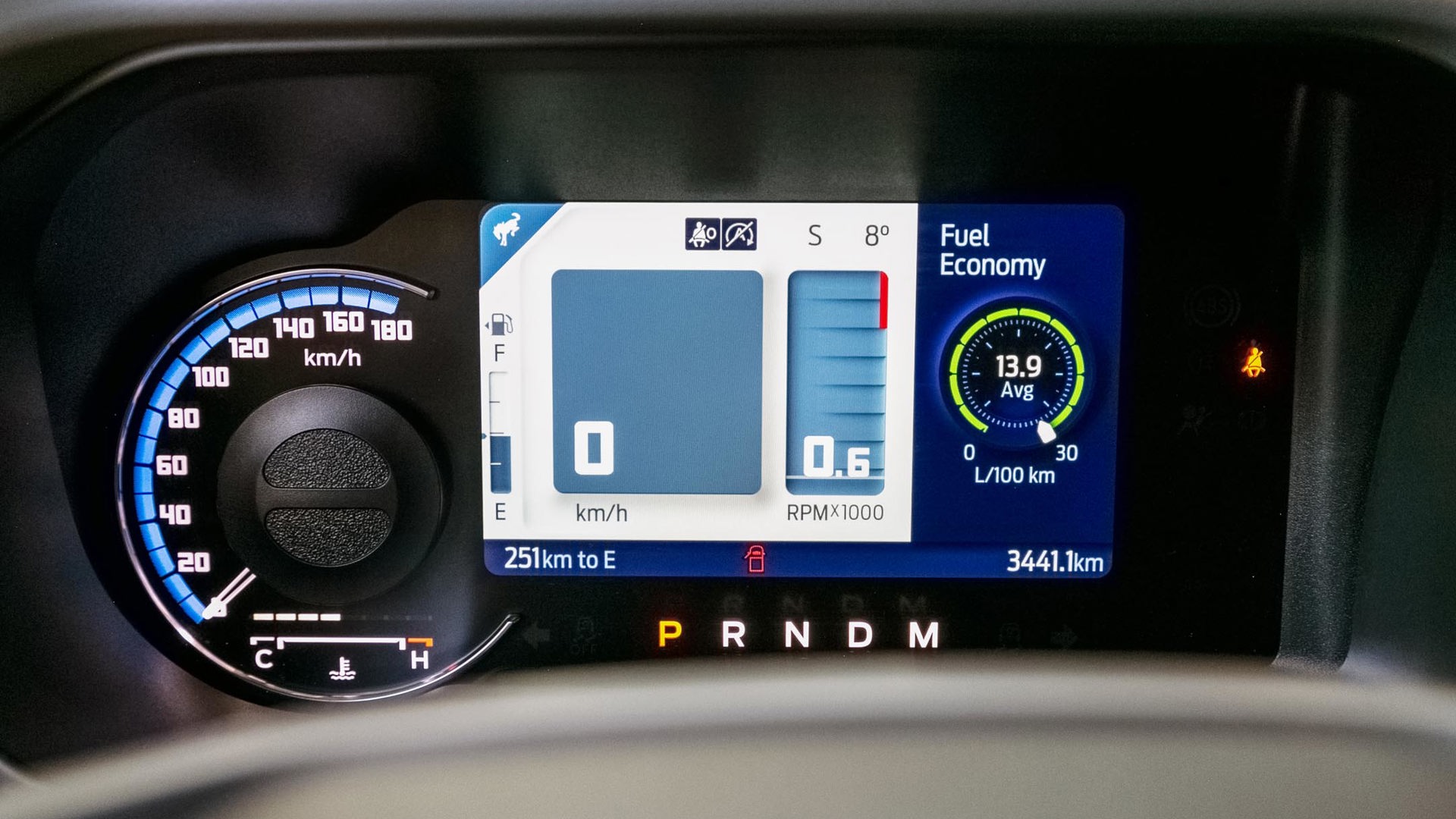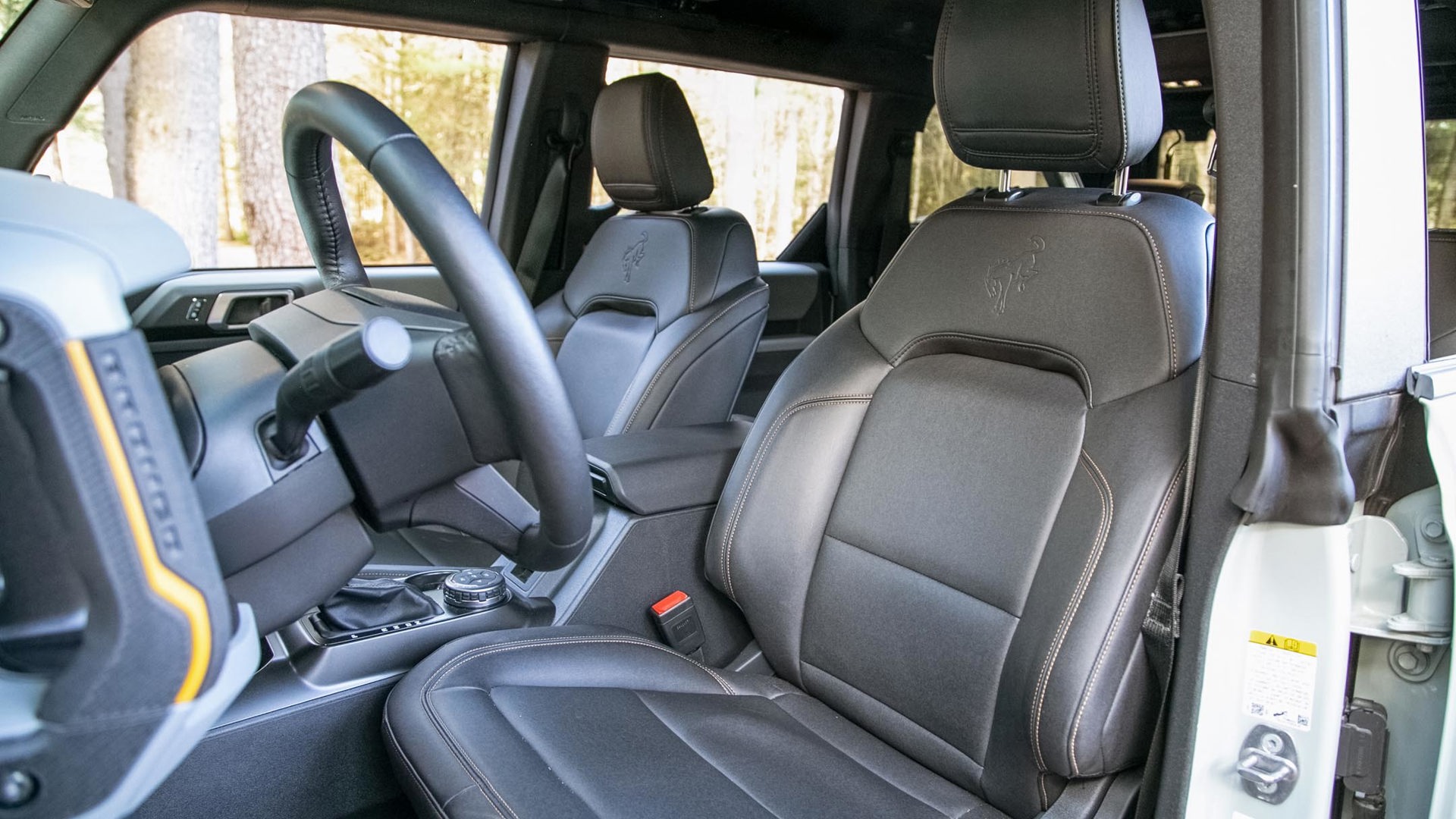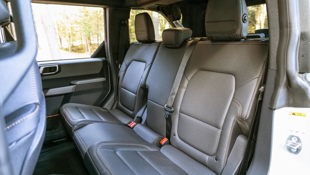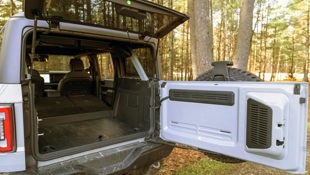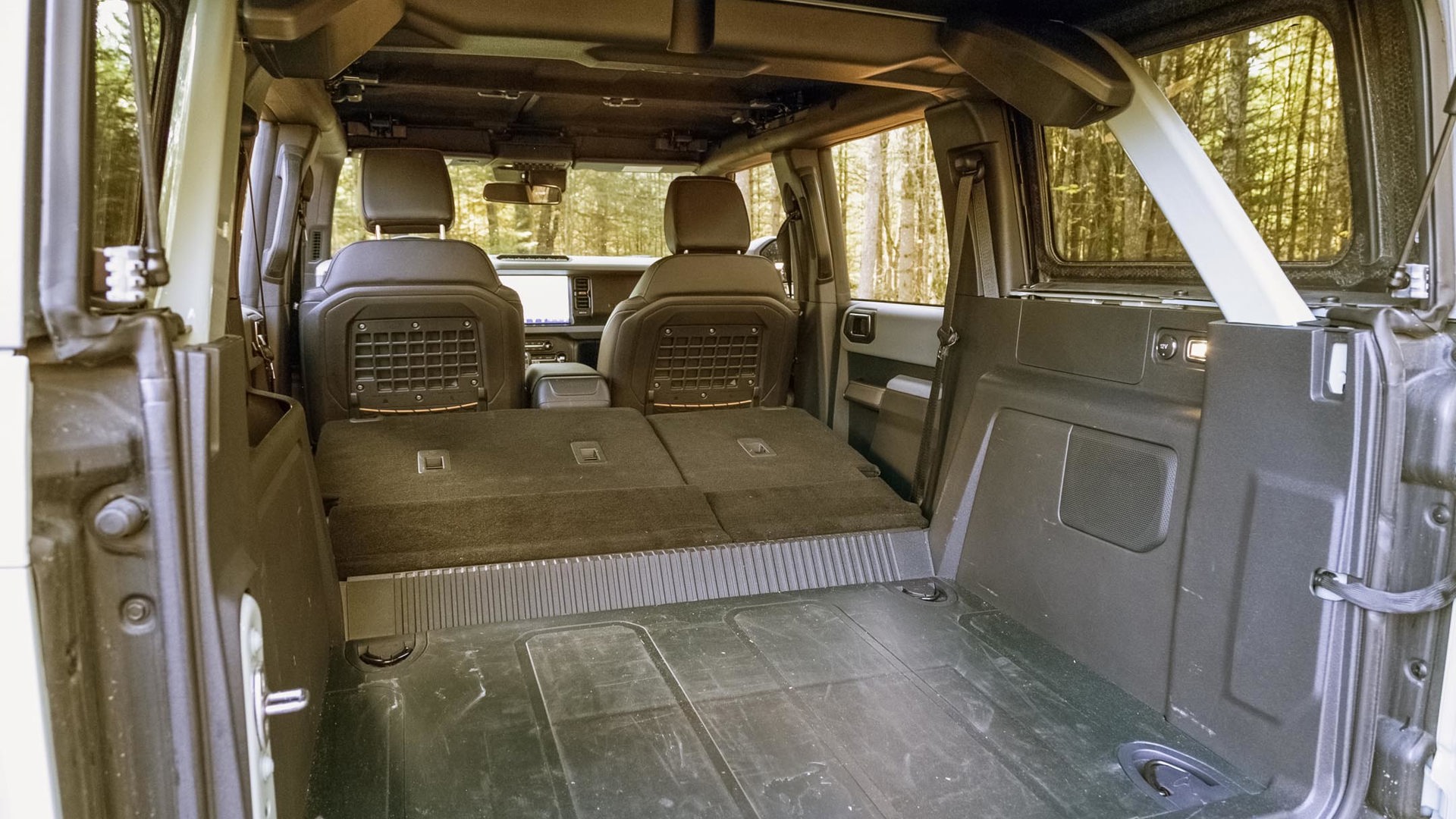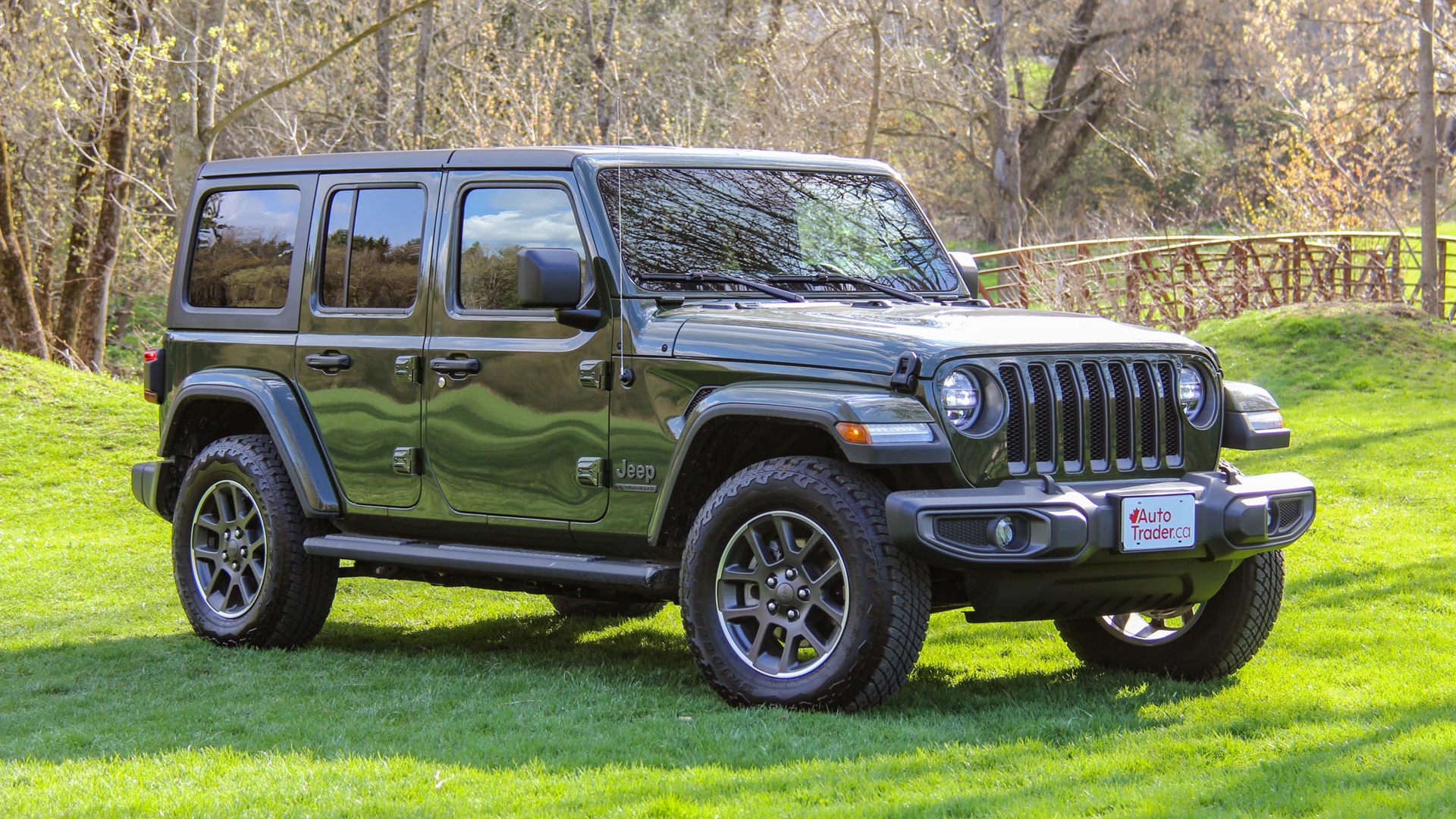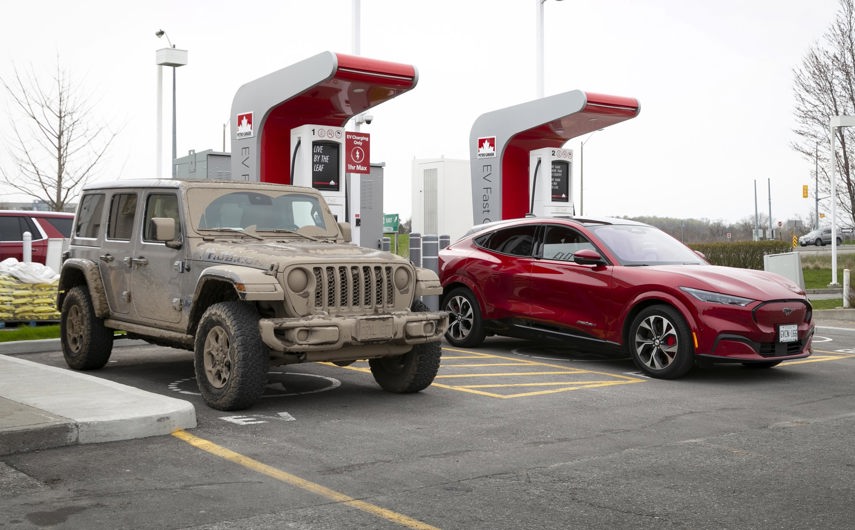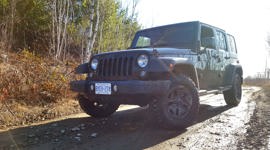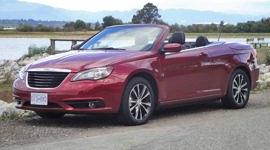If imitation is the sincerest form of flattery, the folks at Jeep must be blushing.
It doesn’t take much time with the reborn 2021 Ford Bronco to find plenty of clues about where they drew their inspiration. Ford’s rugged new SUV comes in two- and four-door configurations, its top (hard panels or soft top) and doors can be removed, and it can be ordered from the factory with enough off-road capability to challenge a mountain goat on a rocky trail, and like the Jeep. Of course, Ford’s motivation for the new Bronco isn’t to show admiration for Jeep as much as it is to gobble up some of the profits from the Wrangler’s continued sales success.
As AutoTrader.ca Road Test Editor (and resident Sasquatch) Dan Ilika noted in his recent test of the two-door Bronco, Ford’s new off-road rig is the real deal. There’s no debate from me, but someone had to find out whether that also means it’s better than the Wrangler. To do that, I set off toward the trail with the most off-road-ready four-door versions of each: the 2021 Ford Bronco Badlands and the Jeep Wrangler Rubicon 4xe plug-in hybrid (PHEV).
Styling
The Wrangler’s Rubicon trim is its most rugged, wearing its 33-inch all-terrain rubber on a set of 17-inch wheels. The shape is unmistakable, with an 80-year evolution on the theme, exposed door hinges and all. It’s tall, square, and unapologetically a Jeep – and most people seem to dig it.
Where a Wrangler driver’s wrist will grow tired from waving at the countless other Jeepers on the road, the Bronco benefits from the uniqueness of being new and, thanks to production delays, very rare. As such, it grabs a lot of attention. Like the Wrangler’s, it’s purposeful in its style and, standing next to it, it’s a tall beast thanks to its off-road suspension and 35-inch tires that are barely tucked beneath the enormous fender flares. It’s particularly imposing from the front, with the Bronco script spanning the width of the grille accentuating the size.
However, the novelty of the Bronco will fade as the roads become littered with them and people begin to notice the big, bland slabs of sheet metal that make up the fenders and doors, or that four-door Broncos wearing anything smaller than 35s look more like a homely Ford Flex than a Wrangler rival. Nevertheless, Ford fans will surely love the retro look as much as Jeep folks will only have eyes for their seven-slot grille.
Inside, both machines emphasize function over fancy, but who would’ve imagined a Wrangler being the more luxurious choice in a comparison test where the other vehicle wasn’t, in fact, an ox cart? The Rubicon’s optional leather package covers the seats in rugged hides, complimented by electric-blue stitching exclusive to the 4xe model. The dashboard also wears some faux-leather and more contrast stitching, and the knobs and dials are all big, macho affairs, though it all looks somewhat dated compared to the Bronco.
The Ford’s style is more contemporary and emphasizes modern tech, especially with the massive 12-inch screen dominating the dashboard. Otherwise, the Bronco is filled with hard, shiny plastics that are durable but chintzy-looking, and while practical, the vinyl seats here look and feel comparatively cheap next to the Wrangler (leather is optional for both).
Ford Bronco: 8/10; Jeep Wrangler: 9/10
Features
The Wrangler’s hard top comes off in three pieces, the Bronco’s in four, and the latches and clamps that hold them on are nearly identical in operation. The doors will come off both and they each require tools (provided) to do so, but the frameless Bronco portals can fit into bags and come along with you; the Jeep’s need to stay in the garage. The Ford has an available premium audio system that sounds good, though the Jeep’s upgraded system sounds better to my ears.
The features that really matter are the ones that make these things ready for escaping a zombie apocalypse. It’s as if Ford’s engineers looked at the Rubicon’s spec sheet and decided one of everything for the Bronco would do. In Badlands trim and fitted with the Sasquatch package like my tester, the Bronco has front and rear locking differentials, a front sway bar that disconnects at the touch of a button, and low-range gearing, plus a bunch of skid plates, rock rails, trail cameras, and winch-ready bumpers – all the same stuff found on the other side of this comparison.
Ford goes a step further with larger 35-inch Goodyears on 17-inch beadlock-capable wheels. The Bronco helps to simplify off-road driving with switchable drive modes that optimize settings for mud, snow, sand, rock crawling, or ripping down the Baja peninsula, depending on trim. Plus, it has an ace up its sleeve: a button that will lock the inside rear wheel to let the Bronco pivot in an impressively small turning circle. It works as promised and can be a godsend on tight trails.
Ford Bronco: 9/10; Jeep Wrangler: 8/10
User Friendliness
At times during testing, the variety of drive modes became more tedious than helpful, as one mode may unexpectedly reconnect the sway bar, while another might switch off the forward camera while it’s being used to help navigate over or around an obstacle. By comparison, the Wrangler requires more off-road driving skill to make the most out of its features but rewards with a more involving experience.
Specced with the so-called Lux package as my tester was, the Bronco comes with a wireless charging pad and a 12-inch touchscreen. Ford’s latest infotainment interface offers logical menus, slick graphics, and the ability to have a dual-screen display with both Apple CarPlay and the radio display, for example. I’ve never experienced a wireless CarPlay interface that wasn’t prone to glitching, but this one only hiccupped once during a week with constant use.
Jeep’s 8.4-inch touchscreen interface is small and dated compared to the Ford’s big screen, but it’s long been celebrated for its sensible functionality, and its hardwired phone connection never missed an input. The Jeep’s traditional pair of instrument gauges are clear and easy to read at a glance. Comparatively, the Ford’s odd speedometer gauge overlapped by a rectangular digital display with a bar graph tachometer is a bit of a visual mess.
Otherwise, both rigs present key controls sensibly, with large knobs for volume and tuning, plus primary climate controls. Console-mounted window switches are a pain at first, but become no big deal with a bit of muscle memory. It should also be noted that the Jeep’s significantly taller side glass provides a much better outward view, with the Bronco’s colossal B-pillar creating a particularly nasty blind spot.
Ford Bronco: 8/10; Jeep Wrangler: 8.5/10
Driving Feel
Testing the off-road limits of either of these machines will likely require deep mud bogs, crawling over rocks the size of a Smart car, or entry into a desert race; but equipped as they were here, they make short work of trails that most other SUVs simply can’t manage. Our wooded adventure provided few challenges to either rig, and it wasn’t until the very capable Nissan Frontier we were with struggled that we realized just how effortless these two make excursions like this.
At one point, my driving companion – and a long-time Jeep owner – boldly tried to climb a steep, rocky hill without shifting the transfer case to its low-range gearing or employing the locking differentials. Mid-way up the incline, the Wrangler came to a halt, spinning rocks and gravel as it was bested by gravity. After locking things up and shifting into low gear, the Jeep collected its composure and easily climbed the rest of the hill, reinforcing the importance of these features when the going gets really tough.
The Wrangler, with its solid axle set-up, can stretch and flex its suspension to keep tires planted when climbing over obstacles, but it’s also a downfall on-road. Even contemporary Wranglers wander around at highway speeds, requiring constant corrections from the driver that can be fatiguing on long trips.
Conversely, Ford has given the Bronco independent suspension up front, and the difference in highway composure compared to the Jeep is significant. The Ford tracks straight and true, and handling is on par with most car-based crossovers. Its brakes were also notably better than the Jeep’s, with plenty of stopping power, good initial bite, and easy modulation. In fairness, the Wrangler 4xe’s regenerative braking is never going to feel as natural.
The added mass of the 4xe’s battery pack doesn’t help braking distances, either, though it does help settle the Jeep’s ride a bit – but surely the difference in road manners between these two will be a deciding factor for many buyers who pick Bronco over the Wrangler.
Ford Bronco: 8/10; Jeep Wrangler: 6/10
Comfort
Balancing ride quality, handling composure, and off-road prowess is no easy feat, but Ford has done a good job with the Bronco. On the highway especially, the Bronco cruises smoothly, but larger pavement heaves and potholes send bigger shockwaves through the cabin than expected.
Four-door Wrangler models tend to ride better than their two-door counterparts, and with the greater mass of the 4xe it’s smoother still, making the difference in on-road comfort between these two closer than expected.
More surprising, the Jeep seemed quieter than the Ford. While both were fitted with sound-deadening mats in their roof panels, the Bronco’s hardtop was far noisier than the Wrangler’s. Road noise was understandably significant given the knobby tires.
Ford Bronco: 7/10; Jeep Wrangler: 6/10
Power
Jeep offers a smorgasbord of powertrain options for the Wrangler, including everything from a turbocharged four-cylinder, to gas-fired six- and eight-cylinders, a diesel, and this plug-in hybrid. This 4xe tester takes the 270 hp four-cylinder turbo engine and couples it with a 17-kWh battery pack hybrid system for a combined 375 hp and 470 lb-ft of torque.
The 4xe is no slouch, and especially with the instant torque of the electric motor, it feels frisky pulling away from a stop; but its mass is ever present and the four-banger makes a lot of buzzy noise. The eight-speed automatic transmission works well, and is well-matched regardless of which engine it’s paired with, never hunting for a gear it can’t find, and offering smooth shifts.
Currently, Ford offers two engines in the Bronco: a 2.3L turbocharged four-cylinder, or the twin-turbo 2.7L V6 found in my tester. My driving partner and I were pleased with its deep growl that makes a pretty convincing impression of a V8. It was so good, in fact, we found ourselves stomping on the throttle just to hear it, and, of course, to feel the considerable rush that its 310 hp and 400 lb-ft of torque provide. A few weeks prior to this test, I drove this Bronco back-to-back with the new V8-powered Wrangler 392, and the difference in acceleration is barely felt. Though while the 10-speed automatic transmission behaved itself in AutoTrader.ca’s time with the two-door Bronco, the same wasn’t true with this four-door, whose transmission frequently clunked into gear – when it wasn’t hunting for the right cog, that is.
Ford Bronco: 7.5/10; Jeep Wrangler: 7/10
Fuel Economy
Whether you’re driving in the city or on the highway, the Bronco swills (regular) fuel at essentially the same rate: 13.9 to 14.0 L/100 km. My observed average across more than 1,000 km of mixed driving (including a day of off-road slogging) still bettered the published figures by a slight margin at 13.4 L/100 km.
The Wrangler wasn’t much better, with an overall average of 12.1 L/100 km despite being a PHEV. For drivers looking for a Wrangler to do double duty as an urban commuter and weekend off-road warrior, the 4xe could be a good choice, but with a lot of highway driving, the benefits are negligible – and Jeep recommends premium-grade gas. With a full charge, the 4xe is rated to travel 34 km solely on electric power, however, on my commute to the office, I was able to top 40 km without a drop of petrol burned.
Ford Bronco: 6/10; Jeep Wrangler: 6.5/10
Practicality
Unlike their two-door compatriots, these four-door off-roaders offer one extra spot inside for seating for five. Despite more overall interior volume in the Bronco, the passenger space – particularly in the back seat – is slightly greater in the Wrangler. The Ford offers more cargo space at 1,085 L behind the rear seat versus the Jeep’s modest 784 L. Similarly, with the rear seats folded, the Jeep’s 1,908 L falls short of the Ford’s 2,350 L. Both were fitted with optional trailer tow packages that top out at 1,587 kg (3,500 lb).
Ford Bronco: 7.5/10; Jeep Wrangler: 7/10
Safety
In both cases, the vehicles were optioned up with thousands of dollars worth of additional safety packages. Automatic high-beams, forward collision warnings with active braking, parking sensors, blind-spot monitoring, and adaptive cruise control are all available on these two at an additional cost. Only the Bronco offers lane-keeping assistance, though the system offered so little assistance – and only once the vehicle had wandered past the lane marker – that its usefulness is questionable. [That seems like a good problem to have. – Ed.]
Ford Bronco: 7/10; Jeep Wrangler: 7/10
Value
With such diverse lineups offering different drivetrains, two- or four-door body styles, and equipment levels that range from spartan to semi-luxurious, the budgets required for either the Wrangler or Bronco can be quite diverse. Starting in the low $40,000 range for a basic two-door Bronco, it’s a costlier entry point than the two-door Wrangler Sport that stays below the $40,000 threshold, but the prices for either can easily top $70,000, as each of these testers did. It’s considerable money for a utility vehicle – especially one that’s meant to go bashing through the wilderness.
Ford made the off-road-ready Sasquatch package available even on the most affordable model, meaning adventurers could buy a simple, rugged machine relatively cheaply. For 2022, Jeep is responding with an Xtreme Recon Package that’ll add 35-inch tires, beadlock wheels, a lifted suspension, and performance brakes that’ll be available on the affordable Willys trim as well as the Rubicon.
The Bronco is the costlier machine, and if a buyer forgoes the plug-in hybrid 4xe costs, a well-equipped Wrangler rings in notably more affordable than the Ford. Shoppers in the segment would do well to check out the Toyota 4Runner TRD Pro and Land Rover Defender, too.
Ford Bronco: 6.5/10; Jeep Wrangler: 7/10
The Verdict
Ford has done a heck of a job with the new Bronco. When compared directly, in some respects the Bronco makes the Wrangler feel dated and crude thanks in no small part to the Ford’s superior on-road composure while it gives up nothing in off-road capability. The brand faithful will stick with the Wrangler, while Jeep, in return, will continue to evolve and improve its signature model as time goes on. For now, if it were my money, the Bronco would be my choice – but make it a two-door.
